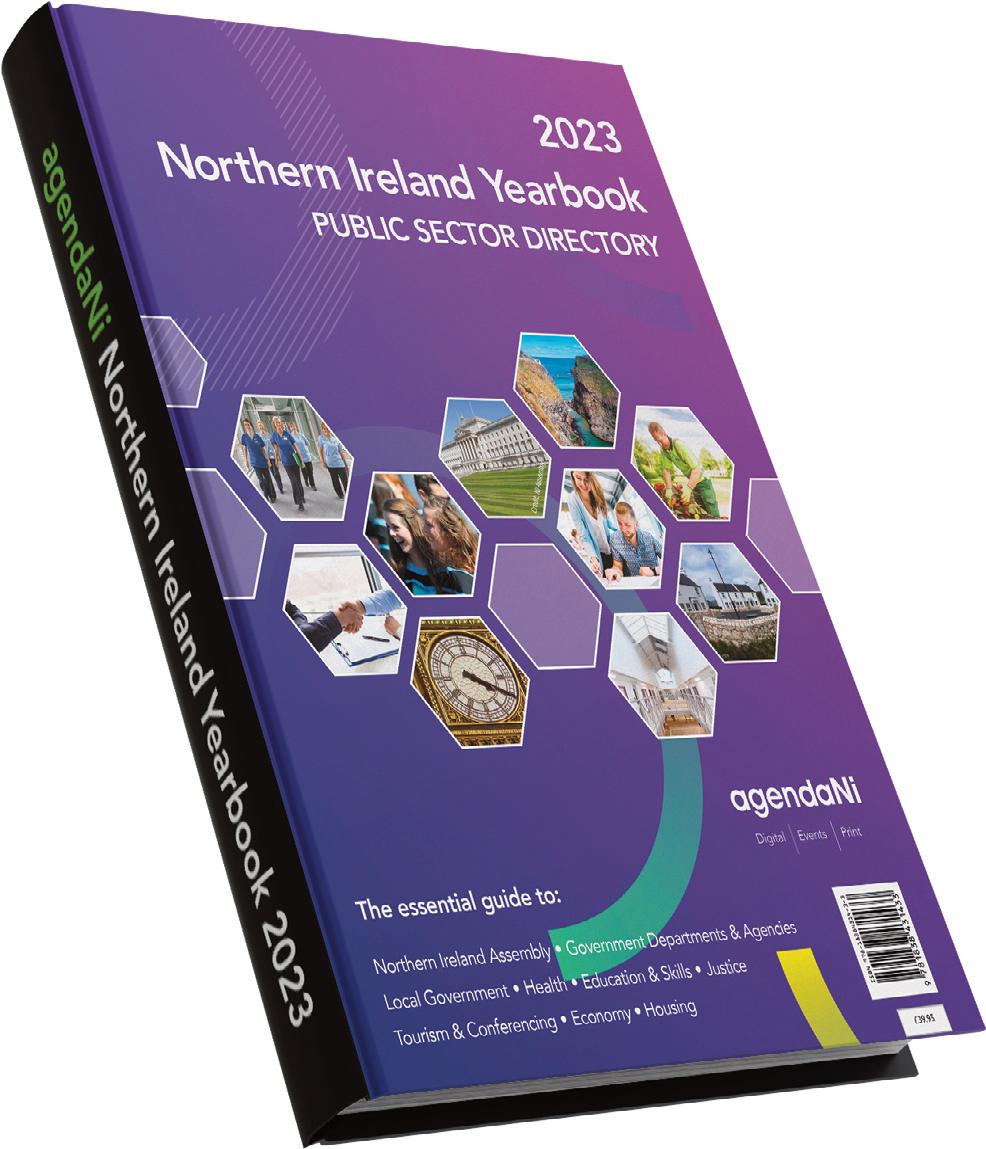




























The major annual conference for the Irish renewable energy










The 2023 Irish Renewable Energy Summit will once again bring together all the key stakeholders from across the renewable energy sector and wider energy sector to discuss how the contribution from renewable energy can be maximised and implemented most effectively.







Featured speakers:




Exhibition opportunities are available for the 2023 Irish Renewable Energy Summit contact info@energyireland.ie for further information.
Organised by











agendaNi is organising its annual Northern Ireland Housing Conference, which has become well established as the major annual event for all those with an interest or role in housing in Northern Ireland. As with previous years, it will have a genuine, in-depth understanding of the key issues via a high-level panel of local and visiting speakers. The conference is an important date in the diary of housing professionals across the region.
Expert speaker panel includes:
Mark O’Donnell
Deputy Secretary, Housing, Urban Regeneration and Local Government Department for Communities

Paddy Gray Professor of Housing Ulster University

Jamie Dickinson Group Head of Social Value Places for People


Anita Conway Director of Development Radius Housing
Simon Reay Group Director Rubixx

Mark Spence Managing Director Construction Employers Federation



Ciarán Fox Director
Royal Society of Ulster Architects
Grainia Long Chief Executive

Northern Ireland Housing Executive
Lynne Mitchell Director of Wheatley Foundation Wheatley Group
Chris Alexander Chief Executive Triangle Housing Association
Deirdre Canavan Senior Services Manager Depaul


Nuala Murphy Director Diversity Mark
Barry Neilson
Chief Executive Construction Industry Training Board
Justin Cartwright National Director
Chartered Institute of Housing
Key issues to be examined:
3 Future housing policy outlook in Northern Ireland

3 Delivering sustainable homes and communities
3 Supporting tenants through the cost of living crisis
3 Responding more effectively to damp and mould in homes

3 Innovative technology platforms for a digital housing management system
3 Housing and the drive to net zero
3 ESG reporting in the social housing sector
3 Developing a person-centred approach to homelessness
3 Challenges and opportunities in construction and contracting
3 Effective tenant participation
3 Skills and resourcing in the housing sector
3 Housing Associations: Challenges and opportunities ahead



3 Innovation in housing: Reimagining better ways to live
3 Collaboration for better results
As winter tails to an end, the frostiness in relations between the UK and the EU appears to be thawing, raising expectations of an imminent agreement on the Northern Ireland Protocol.
That the UK Government has rowed back from the threatening rhetoric of unilateral action comes as no surprise when considering the stagnation of the UK economy amid efforts to recover from successive crises.
A wave of industrial action, a health service in crisis, and a looming recession means economics trumps politics for Rishi Sunak’s Government. At least for now.
In contrast to the UK Government’s apparent climb down on its Protocol demands, in the face of public pressure and the business community’s demand for economic stability, the DUP has presented its seven tests for post-Brexit arrangements.
None of the seven tests relate to health or education reform, cost-of-living supports, or the financial stability of public services. However, the party demands they be met if it is to lift its powersharing boycott.
In Northern Ireland, it would appear that politics trumps economics.
Outside of the political logjam, businesses in Northern Ireland recognise that the status quo is unsustainable. As countries and regions across the world plan for a net zero future, our cover story features NIE Network’s Managing Director Derek Hynes, outlining ambitious plans to develop an electricity network for the future.
In this issue we also look closely at how pandemic response has acted as a catalyst for innovation in the digital government sector, and discuss progress in the sectors of policing and justice, with key stakeholders.
Editorial
David Whelan, Editor david.whelan@agendani.com
Fiona McCarthy fiona.mccarthy@agendani.com
Ciarán Galway ciaran.galway@agendani.com
Odrán Waldron odran.waldron@agendani.com
Joshua Murray joshua.murray@agendani.com
Circulation and Marketing
Lynda Millar lynda.millar@agendani.com
Events
Jillian Wallace jillian.wallace@agendani.com
Advertising
Gail Kinkead gail.kinkead@agendani.com
Design
Gareth Duffy, Head of Design gareth.duffy@agendani.com

Jamie Hogan jamie.hogan@agendani.com
Subscriptions
Sharon Morrison
Email: subscriptions@agendani.com Online: www.agendani.com
agendaNi
Owen McQuade, Publisher owen.mcquade@agendani.com bmf Business Services
19a Maghaberry Road Maghaberry, Co Antrim, BT67 0JE Tel: +44 (0) 28 9261 9933
Twitter: @agendani Web: www.agendani.com
Printed by: GPS Colour Graphics
• This product is made of FSC®-certified and other controlled material.
• This product is made of material from well-managed, FSC®-certified forests and other controlled sources.
David WhelanFebruary 2023 www.agendaNi.com
• This product is made of material from well-managed FSC®-certified forests, recycled materials, and other controlled sources.
• This product is made of material from well-managed FSC®-certified forests and from recycled materials.
• This product is made of recycled materials and other controlled sources.
A critical independent report has outlined inefficiencies in the operational structure of Invest NI, and states that the organisation is having a limited impact in supporting businesses in Northern Ireland.

The report recommends “profound change” in the organisation, which receives funding of £160 million per year.

The report details poor relations between figures at senior leadership level, and among the board. “From our earliest engagements, it became clear to the panel that relationships at senior levels within Invest NI are damaged and are harming the performance of the organisation,” the report states.


In addition, there are concerns raised over trust, openness, and respective responsibilities from board members and senior managers within the organisation, as well as with other
stakeholders. “We were also made aware of concerns within [the Department for the Economy], amongst the business community and partners and, perhaps most worrying of all, amongst Invest NI’s wider staff body, that these divisions and profound tensions are affecting the performance of the agency and their confidence in it.”
The review, chaired by former Chair of the BBC Trust, Michael Lyons, makes a series of recommendations to try and restore public confidence in the arms-length public body. These include: stronger governance and oversight from DfE and better strategic and policy direction needs to be provided; strengthening public understanding of Invest NI’s work and how it uses public monies; and the agency needs to be a better partner, particularly in the sub-regional context.
The British Government has announced legislation detailing that it will build border posts in Northern Ireland’s ports of entry in Larne and Belfast.
The Official Controls (Northern Ireland) Regulations 2023 will enter into force in February 2023, and will grant the Secretary of State for Northern Ireland the power to construct border posts, in order to implement Article 64 of the EU’s Official Controls Regulation.
This move supplants the power of devolved politicians in Northern Ireland, who had control over this matter under the terms of the Protocol.
In January 2022, then-Minister for Agriculture, Environment, and Rural Affairs, Edwin Poots MLA,

ordered workers at the ports of entry in Larne and Belfast to stop checking goods as they arrived from Great Britain into Northern Ireland.
In December 2022, the High Court of Northern Ireland declared that, in doing so, Poots acted illegally, with the Court opining that his directive was “politically motivated”.
Despite the passage of this legislation, the British Government has been clear that it proposes to continue negotiating with the European Union for a reform of the Protocol. This has been echoed by the new Taoiseach Leo Varadkar TD, who, in a recent visit to Belfast, apologised to unionists and stated that the implementation of the Protocol has been “too rigorous”.
Northern Ireland Secretary Chris Heaton-Harris MP has formally set a budget for Northern Ireland, amid failure to form an Executive in the Northern Ireland Assembly.
The legislation will implement the draft budget in November 2022, announced a medium-term target of cuts in education, aimed at bridging the then-overspend of £660 million.

The Secretary of State outlined that although the block grant would temporarily stave off a necessity for cuts, that spending cuts, particularly in the Department of Education, would be required in Northern Ireland, with further threats of introducing water charges in 2023/24.
At the time he set the budget, Heaton-Harris told local parties
that “if they disagree with my budget, the best outcome is for a restored Executive to consider and revise the position I have set out”.

Northern Ireland’s nine departments have been run by civil servants since the DUP collapsed the Executive in February 2022, aiming to utilise their absence as leverage in the negotiations between the British Government and the European Commission over the Northern Ireland Protocol.
As a result of the collapse of the Executive, devolved departments have not had budgets in place since April, with allocations being overseen by Neil Gibson, a senior civil servant in the Department of Finance.

Government targets for cancer screening and referrals in Northern Ireland have been missed according to statistics released by the Northern Ireland Statistics and Research Agency (NISRA), covering the quarter ending in September 2022.

Current targets aim to ensure that urgent breast cancer referrals should be seen within 14 days.
However, only 63.2 per cent (2,364) of breast cancer referrals were seen within 14 days of their urgent referral for breast cancer. This represents a drop of 11 per cent from the same quarter in the previous year.
Additionally, targets outline a goal of making sure that 95 per

cent of patients urgently referred for suspect cancer begin treatment within 62 days after an urgent GP referral.
Despite this, the figures reveal that only 39.5 per cent (527) of patients with an urgent GP referral started treatment within 62 days, which is 8 per cent less than were seen for the same quarter in 2021.
Another failure was that of the target to ensure that 98 per cent of cancer patients who wanted treatment were able to avail of it within 31 days of saying they wanted it. In the quarter ending September 2022, 2,690 patients started treatment following a decision to treat, of which 88.2 per cent (2,373) started treatment within 31 days.


The Department for the Economy and The Crown Estate announced a statement of intent to establish offshore wind leasing in Northern Ireland.
The announcement, made on 16 January 2022, seeks to build on the Northern Ireland Energy Strategy, which establishes a commitment to diversify the renewable generation mix with an initial focus on offshore wind and marine renewables.
The Energy Strategy Action Plan 2022 (published 16 January 2022) includes Action 14 to “develop an action plan to deliver 1GW of offshore wind from 2030”.


Peter Russell, Director of Electricity and Security of Supply at DfE said: “Our ambition of delivering 1GW of offshore wind energy is Northern Ireland’s most ambitious energy infrastructure plan, with the potential to supply enough energy
to power one million homes. The Statement of Intent is a major milestone for the Department for the Economy and The Crown Estate towards unlocking the potential of the Northern Ireland seabed and achieving the Energy Strategy vision of selfsufficiency in affordable renewable energy.”
Gus Jaspert, Managing Director of Marine at The Crown Estate said: “We are highly committed to working in partnership to sustainably manage the seabed and the natural environment for its many users, and to unlocking its potential to support the transition to a net zero energy future. This statement of intent marks an important step forwards, laying the groundwork for building the right conditions for offshore wind leasing and realising the potential benefits for the people of Northern Ireland – local economic investment, low-carbon electricity, and a more sustainable and secure long-term energy supply.”
The Department for the Economy has opened a public consultation for a circular economy strategy, the draft version of which was published in January 2023.
The draft document outlines a long-term target of reducing the average consumption footprint from the current rate of 16.6 tonnes per year per person, to an average of between six and eight tonnes per year by 2050.
In addition, the draft document states that, by adopting “circular practices”, that greenhouse gas emissions can be reduced by 45 per cent, with further benefits to be gained from scaling up low carbon and renewable energy.
A circular economy is, according to the European Parliament, an economic model “which involves sharing,
leasing, reusing, repairing, refurbishing and recycling existing materials and products as long as possible”, thereby extending the life cycle of products.
According to a report published by Circle Economy in 2022, Northern Ireland currently has a circularity rate of 7.9 per cent and can viably achieve a maximum circularity rate of 16.1 per cent by 2032.


Achievement of such a rate would bring Northern Ireland into line with the world average, although it is currently ahead of the circularity rate of the Republic of Ireland, which has a circularity gap just short of 98 per cent.
The consultation for the Circular Economy Strategy will close in March 2023, although it is unclear whether its recommendations will be implemented, with no functioning Executive.

In an effort to circumvent the ongoing DUP boycott of the Northern Ireland Assembly, the SDLP announced its intention to propose to Secretary of State Chris Heaton-Harris MP a change of rules allowing for the election of an Assembly speaker with a supermajority, rather than requiring cross-community support.
The DUP is currently boycotting the devolved institutions, in attempt to exercise leverage over the British Government as it negotiates reforms of the Northern Ireland Protocol with the European Commission.
Whilst the requirement of a supermajority would, in theory, not require cross-community support, the numerical makeup of the Assembly would mean that unionist support would, in practice, be required in order to elect a speaker.
Despite the ambitions outlined, the SDLP did not partake in the

meeting with Heaton-Harris, as the British Government delegation, which also included Foreign Secretary James Cleverly, refused to invite Sinn Féin leader Mary Lou McDonald TD.
The Foreign Secretary claimed that this was down to diplomatic protocol, as McDonald is the leader of the opposition in Dáil Éireann, and Cleverly had not yet met his Irish counterpart, Micheál Martin TD.
The DUP, UUP, and Alliance did partake in the discussions. DUP leader Jeffrey Donaldson MP claimed that there was progress being made between the British Government and the EU, but that the DUP would continue boycotting the institutions until the Protocol was either “significantly reformed” or scrapped.
Since the 2016 referendum, the number of health service professionals being recruited into the NHS from the European Union has declined significantly, a report has found.
The report, published by the Nuffield Trust, states that across medicine, nursing and social care, there has been a decline in EU recruitment and registration since the EU referendum in 2016.
Despite this, the report finds that recruitment from the rest of the world has managed to offset the decline in recruitment from the EU, with the number of nurses moving to the UK from non-EU countries having increased from 800 in 2012/13 to 18,000 in 2021/22.
However, the report further outlines that this is not sufficient to make up for ongoing shortages in nursing and cannot be a replacement for adequate workforce planning to recruit and retain staff domestically.
Brexit has further had a significant impact on the import of medicines, with several essential specialties of medicine facing chronic shortages having seen EU and EFTA recruitment drop off without increases from other countries compensating for this.
The fact that the UK is the only state in the G7 facing these shortages, suggests that these shortages are due to increased post-Brexit trade barriers impacting the British economy.


Figures recently released by the Northern Ireland Statistics and Research Agency (NISRA) suggest that the Northern Ireland Protocol (NIP) has not stymied the value of trade
Northern Ireland and Britain. Meanwhile, total sales, sales within Northern Ireland, and exports to the Republic are at their highest recorded levels.
Published annually by NISRA, the Northern Ireland Economic Trade Statistics (NIETS) appraises trade between local businesses and markets inside Northern Ireland and beyond. Most recently published in December 2022, the NIETS utilises both the sale/export and purchase/import of goods (tangible products) and services (intangible products) in non-financial industry sectors (not including trade in the public sector, insurance sector, and most of the agriculture sector).


In 2021, turnover, or total sales, by companies located in Northern Ireland was valued at £77.1 billion, an increase of 13.6 per cent on 2020 (£67.9 billion). In the same year, total purchases by businesses were estimated to be £48.7 billion in 2021.
Of this total, 67.6 per cent (£52.1 billion) were sales within Northern Ireland. The remaining 32.4 per cent of sales (£24.9 billion) were split almost evenly, with 51
per cent (£12.8 billion) going to the market in Britain and 49 per cent going to markets elsewhere*. Sales to Britain and sales to elsewhere accounted for 16.6 per cent and 15.8 per cent of sales respectively in 2021.
At the same time, exports (or sales outside the UK) of goods (£9.2 billion) and services (£3 billion) were worth a combined total of £12.8 billion, an increase of 16 per cent on 2020. Exports of goods increased by 13.7 per cent (£1.1 billion) while the export of services

increased by 23.6 per cent (£0.6 billion). In total, exports of goods accounted for 75.8 per cent of all export sales in 2021, while exports of services represented 24.2 per cent.

Totalling £51.3 billion, the sale of goods accounted for exactly two-thirds of sales in 2021, representing a 13.8 per cent (£6.2 billion) annual increase. Meanwhile, the sale of services (£25.8 billion) accounted for the remaining third of sales, marking a 13.3 per cent (£3 billion) annual increase over the year.
Several of the increases in the annual growth rate of sales have been largest on record. This includes a 13.6 per cent increase (£9.2 billion) in total sales (£77.1 billion), a 13.2 per cent increase (£6.1 billion) in sales within Northern Ireland (£52.1 billion), and a 23 per cent increase exports (£1 billion) to the Republic (£5.2 billion).
In 2021, total purchases by companies located in Northern Ireland were valued at £48.7 billion, comprising the purchases of goods (£38.8 billion) and services (£9.9 billion). Purchases of goods accounted for 79.6 per cent of total purchases, representing an annual increase of (£4.6 billion). As per 2020, purchases of services represented 20.4 per cent of total purchases.
Northern Ireland represents the single largest market for the purchases of goods (50.6 per cent) and services (69.4 per cent), with a total purchase value of £26.5 billion. This is followed by Britain, representing 29.8 per cent of total purchases (£14.4 billion). Imports from the Republic, the rest of the EU, and the rest of the world represented a combined 15.8 per cent of total purchases (£7.7 billion).
Trade balance is defined by the difference between the value of sales/exports and purchases/imports. A trade surplus exists when sales/exports exceed purchases/imports (referred to as a positive trade balance), and a trade deficit exists when the inverse is true (referred to as a negative trade balance).
In 2021, Northern Ireland exported more goods and services than it imported. In relation to the overall balance of trade, exports of goods and services (£12.2 billion) exceeded imports of goods and services (£7.7 billion), resulting in a £4.5 billion trade surplus (otherwise known as a positive trade balance).
Taken in isolation, the export of goods (£9.2 billion) relative to the import of goods (£6.8 billion) resulted in a surplus of £2.4 billion, while the export of services (£3.0 billion) relative to the import of services (£0.9 billion) resulted in a surplus of £2.0 billion.
However, a deficit exists in the balance of trade between Northern Ireland and Britain. The total value of goods and services sold to Britain (£12.8 billion) was exceeded by the total value of goods and services purchased from Britain (£14.4 billion), resulting in a £1.7 billion trade deficit. This deficit has narrowed relative to 2020 (£2.3 billion).
Aside from 2016 and 2020, Northern Ireland’s total sales have consistently experienced annual growth and, until 2020, never recorded an annual decrease. The decrease in 2016 was primarily a result of the first recorded decrease in sales to Britain. This trend continued in 2017, though at a reduced rate, before returning to positive growth in 2018. In fact, in 2019, sales to Britain marked the only recorded sales growth that year. Exports, however, have been consistently more erratic.
NISRA acknowledges that the increased value of sales and exports simply mirrors, to some extent, the strong post-Covid economic recovery following reduced trade in 2020. As a result of the Covid-19 pandemic and the associated public health restrictions, there was a downturn in total sales in 2020 with the impact being felt by every destination aside from Britain.
The NIETS asserts: “When the figures are viewed in the broader picture of trends observed over the past number of years, the 2021 figures broadly align with what might reasonably have been expected were it not for the impact of the pandemic in 2020.”
Similarly, the figures have not been adjusted to account for inflation.
One year after the implementation of the Northern Ireland Protocol (NIP) in January 2021, contrary to assertions that it “has damaged the Northern Ireland economy”, NISRA figures indicate a 13.2 per cent increase (£6.1 billion) in sales within Northern Ireland, a 14.5 per cent increase (£3.2 billion) in external sales in 2021, a 23 per cent increase (£1 billion) in exports to the Republic, and a 13.6 per cent increase (£9.2 billion) in total sales. Indeed, while the DUP projected “barriers to trade have been created with our largest market [Britain], inevitably leading to devastating consequences”, the value of Northern Ireland sales to Britain in 2021 increased by 13.1 per cent (£1.5 billion) to £12.8 billion.

• Sales from Northern Ireland to Britain: £12.8 billion
• Purchases from Britain to Northern Ireland: £26.5 billion
• Exports from Northern Ireland to the Republic: £5.2 billion
• Imports from the Republic to Northern Ireland: £3.1 billion
• Exports from Northern Ireland to the EU (excluding the Republic): £2.6 billion
• Imports from the EU (excluding the Republic) to Northern Ireland: £2.5 billion
• Exports from Northern Ireland to the rest of the world: £4.4 billion
• Imports from the rest of the world to Northern Ireland: £2.1 billion
• Total sales from Northern Ireland: £77.1 billion
• Total purchases to Northern Ireland: £48.7 billion
Source: NISRA



Northern Ireland, as the organisation prepares to submit its ambitious price control plan (RP7) out to 2031.

Hynes is clear in his belief that the Regulatory Period 7 (2025-2031) will be a critical step in enabling the transformation of the electricity network necessary to facilitate a net zero carbon future.
NIE Networks recently concluded public consultation on the plan which seeks to double investment levels in the network to £2.6 billion, and Hynes acknowledges the “responsibility” that comes with such an ambitious investment plan, set to be submitted to the Utility Regulator in March 2023.
Underpinning the need for transformation is the Department for the Economy’s Pathway to Net Zero strategy and the subsequent Climate Change Act, which commits to a target of 80 per cent of electricity consumption coming from renewable sources by 2030, and to net zero carbon emissions by 2050.

Although full decarbonisation will require a range of renewable technologies, electrification has been identified as a key driver across energy, heat and transport. As the owner of an electricity network consisting of approximately 2,200km of transmission network and 47,000km of distribution network, NIE Networks’ reach to over 910,000 customers in the form of homes, businesses, and farms, means that the capacity, accessibility, and reliability of its network is critical.
The Managing Director explains that to meet demand, NIE Networks is embarking on the most significant change in design, management, and operation of the electricity network since rural electrification in the 1960s.
“Our vision is to provide an electricity network that is capable of facilitating Northern Ireland’s overall plan to address climate change, which aims to achieve net zero carbon and affordable energy by ending our society’s reliance on fossil fuels and its associated price volatility,” Hynes states.

However, he stresses that NIE Networks is aware of the responsibility it has to strike a balanced position in its future plans, ensuring that not only is investment in the electricity network
maximised, but that such investment does not add to the financial hardship currently being felt by many customers.
Identifying two major shifts in recent years, in the form of not only a consumer-led societal shift, based on morality, ethics and climate justice, but also a manufacturing-led revolution which will ultimately see the removal of fossil-fuel powered heating and transport, Hynes emphasises that lack of capacity on Northern Ireland’s 100-yearold electricity network must not act as a blocker to transformation.
Forecasts carried out by NIE Networks estimate that by 2030, Northern Ireland’s electricity network will need to support 80 per cent of clean energy generation and facilitate around 300,000 electric vehicles and 120,000 heat pumps. Offering context to the challenges to network capacity such a shift would pose, Hynes says that the network currently supports around 770,000 homes with instantaneous consumption of around 2.5kW per home. However, it is estimated that with the introduction of an electric vehicle and a heatpump, the average household consumption will rise to 7kW per home, exceeding the expectation of the planning, engineering and design standards which have existed since the 1950s.
“There is no doubt in my mind that there is not enough spare capacity in the existing network to allow that level of increase,” states Hynes.
The Managing Director says that underpinning the scale of the transformation needed is the relatively low level of additional long-term capacity investment through the RP4 and RP5 price control periods. While the current RP6 has progressed in building in additional network capacity, particularly replacing elements of the 11KV overhead line network which feeds the vast majority of towns and villages, RP7 is significantly more ambitious.
He explains: “RP6 has been a good period for connecting generation to the network, with about 1.8GW of generation connected to the distribution system in Northern Ireland. However, what that has done is use up any spare headroom on the transmission and distribution systems.
“Electrification only makes sense environmentally if consumption is from a renewable, non-fossil fuel based, and locally produced generation source, so we must build the electricity network to allow those sources to be connected.
“By delivering an innovative, dynamic, and integrated distribution system that can flex in response to supply and demand, our customers will benefit from faster and cheaper access to network capacity. This will also enable uptake of low-carbon technologies at least cost, whilst retaining flexibility in the network for future changes in customer demands.”
Plans to almost double the level of investment through RP7, compared to 4
“By delivering an innovative, dynamic, and integrated distribution system that can flex in response to supply and demand, our customers will benefit from faster and cheaper access to network capacity.”
Derek Hynes, Managing Director, NIE Networks
planned expenditure in RP6 (£1.4 billion), will mean an extra £1.2 billion over the seven-year period. Hynes sets out that £800 million is earmarked for replacing old network, including increasing capacity in the low voltage urban network.
This, he explains, will see almost all the older 3-5kVA pole mounted transformers on the network replaced with a new standard of 25kVA transformers and the Managing Director believes that by proactively and efficiently rolling out these upgrades, NIE Networks can
mitigate connection delays and barriers for customers wanting to decarbonise their homes.


Additionally, investment in reliability will see around £400 million go towards replacing a range of many high-voltage substations. Many of these have passed the end of their economic life of between 40 to 50 years and are now also reaching the end of their technical life, leading to a reduction in reliability and increase in maintenance costs.
Beyond the network itself, Hynes points
to plans to increase investment in NIE Networks’ IT spend by four times what it has been in the past, enabling amongst other things a greater emphasis on digital engagement with its customers, as well as the integration of improved monitoring technology and the utilisation of the data capabilities that come with it.
A number of major initiatives still sit outside the RP7 plan, awaiting policy direction from the Department for the Economy, including smart metering, the North South Interconnector, connections policy, and the facilitation of offshore generation. While inclusion of these policies would require further investment, Hynes acknowledges that within the time period of RP7, NIE Networks must build in flexibility to enable future policy direction and foresight. This will lay the groundwork for RP8 and RP9, which will bring Northern Ireland to almost 2050, if the electricity network is to support a decarbonised future.
Hynes emphasises the importance of strong policy direction as NIE Networks seeks to raise private investment. The company receive a small percentage of a customer’s overall energy bill and profit generated from this source enables it to raise debt to fund its investments in the electricity network in Northern Ireland.

“RP6 has been a good period for connecting generation to the network, with about 1.8GW of generation connected to the distribution system in Northern Ireland. However, what that has done is use up any spare headroom on the transmission and distribution systems.”
NIE Networks is in an advantageous position in this regard, with large investor interest in regulated energy companies, as a model which provides a large degree of certainty for return on investment. Equally, NIE Networks, as a business with a central role in delivering a net zero agenda for a whole region, is recognised as sustainable and green investment by many banks and investors.
However, Hynes acknowledges that some challenges exist to attracting investment. While political stability in Northern Ireland helps to make it more attractive to investors, more important, he emphasises, is that clear energy and environmental policy direction is issued in a timely manner, enabling the right price signals to the market.
“The private sector has a profit motive and, given the appropriate regulatory price signals, has trust in our regulated model. However, they also require certainty in the direction that Northern Ireland and NIE Networks are going. NIE Networks has been well supported by the Utility Regulator in recent years, particularly in the two years post-Covid, where investment has been enabled in the right areas. In this regard, the RP6 period has been a steppingstone from a maintenance level of network investment to a network growth investment level over the last few years of RP6. RP7 can be a major enabler of transformation of the network.”
Another interest of investors is not just NIE Networks’ role in decarbonisation, but the green credentials of the company itself. Hynes believes NIE Networks’ Environmental Action Plan commitments for the RP7 period are “ambitious and achievable”.


Commitments for 2030 include the halving of directly controllable carbon emission; electrification of more than half of the company’s fleet; and the promotion of environmental and social transparency in the company’s supply chain.
Internal capacity is also a priority. RP7 includes an ambition for NIE Networks to increase its current headcount of 1,400 to more than 2,000 by 2030 with most of those new jobs appearing by 2028. In addition to recruiting for roles including
IT, finance, data analysts, technical and skilled staff, NIE Networks is already building on its apprenticeship, trainee and graduate programmes. In January 2023, NIE Networks will begin recruitment for 27 apprentices and Hynes outlines that this will rise to closer to 100 from 2025.
“Our apprenticeship scheme is a vital talent pipeline for the company and will be essential in transforming the network for the benefit of NI plc for the next seven years and beyond,” he says.
In April 2021, NIE Networks published its strategy paper titled Networks for Net Zero, setting out its views on how electrification can play a key role in a flexible and integrated decarbonised energy system. It reinforced NIE Networks’ ambition to place customers at the forefront of the energy transition by minimising future network costs in the delivery of a low carbon economy and providing flexibility in the network to enable customers to make informed decisions on energy efficiency and opportunities for active participation in new markets.
To deliver, NIE Networks is transitioning to a Distribution System Operator (DSO), which Hynes explains will see the organisation “focused on delivering whole system and customer benefits through the facilitation of access to markets and minimising future network costs in the delivery of a low carbon economy”.
Despite ambitions to double levels of
investment in the network over the RP7 period, Hynes is quick to point out that the amount paid by the consumer to NIE Networks is unlikely to rise above RP6 levels due to greater levels of electricity consumption.
He adds: “The bulk of our investment is in long-life assets so, while the overall cost is significant, the charges levied on customers to pay for those assets are spread over a long time period, meaning the annual cost will be much smaller.
“We estimate that the volume of electricity transported across our network will, on average, be around 10 per cent higher during RP7 compared to average levels in RP6 as electricity replaces fossil fuel usage. This will put downward pressure on average network charges, which means we estimate we can deliver the increased levels of investment during RP7 whilst keeping distribution network unit charges (in real terms) in line with those of RP6.”
Summarising his vision for the RP7 plan, Hynes reiterates his belief that NIE Networks has a key role in facilitating the delivery of a sustainable energy system for all.
He concludes: “This level of change cannot be delivered alone. We need a collective, collaborative approach across government and industry. We need politicians and communities to buy in to the bold and highly ambitious vision.
“We need support from leading industry figures, academia and entrepreneurs to deliver the step change our economy needs and create a more investible Northern Ireland.”
“The bulk of our investment is in long-life assets so, while the overall cost is significant, the charges levied on customers to pay for those assets are spread over a long time period, meaning the annual cost will be much smaller.”


The December 2022 release of the census was centred around responses to housing and health. Declining health standards have been recorded across the board, with additional rises in the number of people (nearly 70,000) who are providing unpaid care, a figure which includes 2,600 children aged 14 and under.

Over the last 10 years, there has been a significant increase in the number of unpaid carers in Northern Ireland, amid a backdrop of failure to implement health reform prior to the collapse of the Executive.
Around one-in-eight people (222,200) provided unpaid care to a relative or friend who had a health condition or illness. Within this, over 68,700 people provided 50 or more hours of unpaid care per week. It was most common among those aged 40 to 64, where the ratio

changes to one person in five (or 124,600 people). Even more shocking is that 2,600 children aged five to 14 provided unpaid care.
Overall, the number of people providing 50 or more hours unpaid care each week has increased from 56,300 people in 2011 to 68,700 people in 2021. Additionally, the number of people providing more than 50 hours per week of unpaid care number has risen from 46,700 people in 2001 (3 per cent of the population) to 68,700 (3.8 per cent of the population) in 2021.
There has been a notable rise in the number of people in Northern Ireland with ‘bad or very bad’ health. In 2011, 100,000 people had ‘bad or very bad’ general health, by 2021 this had risen to nearly 150,000 people. In percentage terms this is a rise from 5.6 per cent of the
Census figures have revealed a decline in levels of wellness, with more people being forced to act as carers for their relatives. It further reports a significant expansion in the private rented sector, and that homes are still reliant on fossil fuels for home heating.
population in 2011 to 7.7 per cent in 2021. The census report analyses that this is “driven partly by the increasing number of older people in our population”.

The overall picture of health in Northern Ireland is that the population’s health could be better, with just under 1.5 million people (78.7 per cent), indicating they had ‘good or very good’ general health.
Meanwhile, nearly 150,000 people indicated they had ‘bad or very bad’ general health. The remaining 260,000 people indicated they had ‘fair’ general health.
As expected, general health standards fall with age; while less than 1 per cent of people aged under 15 had ‘bad or very bad’ general health, this figure rises to 17 per cent of people aged 65 and above. In contrast, nearly 97 per cent of people aged under 15 had ‘good or very good’ general health, a figure which falls to half of people aged 65 or more.
In addition, the census report shows that, between 2011 and 2021, health standards have declined in nine of Northern Ireland’s 11 council areas.
The census finds that there are 52,300 vacant houses in Northern Ireland. Although some of these homes will invariably not be fit for habitation, there are comfortably enough homes to adequately house Northern Ireland’s homeless population of 15,758.
10,900 of Northern Ireland’s vacant homes are in Belfast, whilst Causeway Coast and Glens Borough Council area encompasses 9,000 vacant homes, meaning that 13.5 per cent of houses in this council area are vacant, the highest proportion of the 11 councils in the region.
On homeownership, the census finds that almost twothirds (65.2 per cent) of the population of Northern Ireland own their homes, with the remaining 34.8 per cent in the rented sector.

Despite these relatively promising numbers, the private rental sector has seen a stark growth since 1981, with the number of people in private rented accommodation having nearly doubled from 9.1 per cent to 17.2 per cent, making this the fastest-growing sector in housing.
This has been matched by a vast reduction in the number of people in social housing, as Northern Ireland’s social housing sector continues to lag far off demand, leaving prospective tenants forced to turn to the private sector.
Additionally notable was the regional discrepancy in homeownership, with 74.1 per cent of Lisburn and Castlereagh residents owning their home, compared to a narrow majority (51 per cent) in Belfast.
Despite the passage of the Climate Change Act, Northern Ireland’s home heating system remains reliant on home heating oil, with 49.5 per cent of homes in Northern Ireland using heating oil as their source of energy.

Meanwhile, 31.6 per cent of homes in the region are reliant on mains gas as their source of home heating, with the remaining 18.9 per cent not categorised. Belfast City Council area, however, bucked this trend, with 70.9 per cent of homes making usage of mains gas for their heating supply, whilst only 20.2 per cent of homes were using home heating oil.
Further to this, there was a strong correlation between rural councils and a higher usage of home heating oil as a heat source for homes, with Fermanagh and Omagh District Council area recording a ratio of home heating oil to mains gas heating of 48:1.
The census finds that residents in rural council areas have a much higher usage of renewable energy, with usage of 7.6 per cent recorded in Fermanagh and Omagh, compared with just 3.3 per cent of residents in Belfast.
CGI was founded in 1976 in Canada and now stands as one of the largest IT and business consulting services firms in the world. We have 400 locations across the globe, including 21 in the UK where we have built a trusted reputation across central, local, and devolved government for doing complex things well.


Our aim is to build up our presence in Northern Ireland in phases. Right now, we’re focusing on recruiting our first 50 members. These members will focus initially on delivering services for CGI’s client base both in Great Britain and globally, but over the next 12 months, we will also look to build a public sector business in Northern Ireland. Through the power of technology, we have an enviable track record of success, delivering efficient citizen-centric services which protect the vulnerable and help keep society safe, whether managing secure satellite missions, or advancing the digital journeys of government, judicial and health services, and commercial enterprises.
We have built this success on our client-proximity operating model, whereby local teams are empowered to build strong, trusted, in-person relationships and ensure accountability for delivering client success.

At CGI, we view our professionals as company owners or ‘members’; our aim is for every member to reap the benefits of ownership by providing shares in all our remuneration packages. This helps us to attract and retain the best talent.
CGI is an expert in land management, offering a comprehensive suite of solutions built specifically to manage assets. In Wales, we have delivered a single electronic register to help maintain records of all common land, towns and village greens in its 22 local authorities. The register, which replaced the previous 50year-old paper-based maps and records system, now provides a service that integrates a geospatial portal with back-office administration for the Welsh Government.
For more than 20 years, we have been at the forefront of helping the UK criminal justice system to adopt new technology and employ modern ways of working to transform the way justice is administered across the nation.
CGI’s contribution in this field is significant. Case management is at the very heart of the services we provide; we developed the first case management system nearly 20 years ago, and our experts continue to develop, deploy, and maintain these systems, enabling courts and prisons to operate effectively and efficiently today.
With 70,000 front-line justice users relying on our systems, these citizen-facing digital services are designed around the public who need them.
With our deep justice domain expertise, we continue to enhance citizens’ services online and increase the efficiency of justice agencies dealing with complex, sensitive, and highprofile legal cases. Every day, more than 10,000 new cases and 3,000 new claims are processed online. This electronic access to, and submission of, case information is rapidly and securely driving UK justice digitisation.
We also work with local authorities – including City of Edinburgh Council in Scotland – to increase efficiency, improve decision-making, and achieve better outcomes for citizens and communities by delivering innovative, sustainable smart places.
Benefits include more proactive estate management, better services and neighbourhoods for citizens, healthier and safer social housing with increased sustainability and regulatory compliance, improved waste management through the utilisation of smart bins, sustainable recycling and route optimisation, and the ongoing use of data to drive ‘real world’ efficiencies.
Our global expertise is fed into our local business, which in Northern Ireland is delivered from our newest UK office in Belfast, providing for local resources to deliver the right skills from the right location.
In every area we work, including Northern Ireland, we are committed to a more inclusive and sustainable world, for future generations. Part of our heritage is to build relationships with the communities in which we live and work. We do this through activities such as volunteering and fundraising, helping our members to engage within our local communities.
During COP26 in Glasgow in 2021, we also set out our own roadmap for achieving net zero by 2030 for its global operations, 20 years earlier than the target date set by the Paris Agreement in 2015. In the UK, we are going even further, aiming to achieve net zero greenhouse gas (GHG) emissions from our own operations by 2026.
As part of this commitment, our UK business has received validation for our science-based targets (SBTs) from the Science Based Target Initiative (SBTi). These will reduce GHG emissions, in absolute terms, by 46 per cent for our own operations and by 46 per cent for business travel by 2026, from a 2019 base year.
Alongside this, CGI UK has set a supply chain engagement target and committed to a ‘starting point’ of ensuring 50 per cent of our suppliers by spend have set science-based targets by year end 2026. Our commitment to climate change was further recognised after we were selected as the partner to 2022 host nation Egypt to support COP27 in Sharm el-Sheikh.
Chris
ShorthouseVice President, Client Engagement – Scotland and Northern Ireland
Shorthouse joined CGI in April 2018 and has more than 17 years of experience working in IT including many years working with the UK Government.
Since joining CGI, Shorthouse has played a key role in securing high-profile competitive contracts. In his current role as Vice President, Client Engagement at CGI, he has overall responsibility for the growth of CGI in Scotland and Northern Ireland, leading the growth team, client engagement and marketing. Shorthouse brings a wealth of experience and knowledge of the UK public sector including justice. He aims to create a vibrant partner ecosystem, that will extend our market presence in Northern Ireland.
Michelle
SherrardDirector, Consulting Services – Northern Ireland

Sherrard joined CGI in February 2022, following a successful 25-year career as an IT sales professional within the ICT industry. She began her career as a software developer before moving into sales and account management 20 years ago.

In her current role as Director, Consulting Services, Sherrard is leading the growth of CGI’s business in Northern Ireland, helping the public sector deliver digital first services for all citizens of Northern Ireland. She brings to this role her successful track record, in-depth experience, and knowledge of government procurement within the public sector along with her strengths in networking and in identifying and creating new opportunities.
Connor
WalshDirector of Consulting Delivery – Northern Ireland
Walsh joined CGI in June 2022 and has more than 25 years’ experience working in digital transformation, ICT integration, IT outsourcing and managed services. Having begun his career with IBM in 1995 as Technical Lead/Project Manager, Walsh has gone on to work in senior management roles at BT, EY and Kainos, specialising in public sector, finance, insurance, shared services and telecommunications. Walsh now brings his wealth of experience to CGI where, as Director of Consulting Delivery, he will lead the client engagement strategy for the CGI justice sector.
Phil Hanvey
Hanvey has worked for more than 40 years in the ICT industry, much of which was in the Justice sector, and has a proven track record of delivering complex, multi-million pound digital strategies and change programmes. Career highlights involved leading NIO’s technical delivery of the Northern Ireland Causeway Programme.


Previous roles include Senior Strategist at the University of Ulster, Director of Technology at Protection Group International (PGI), after it bought out Olton where he was Lead Architect and Technical Delivery for Digital Transformational Change, and Technical Lead at the Northern Ireland Office.


Belfast
323 – 3rd Floor Scottish Provident Building
7 Donegall Square West
Belfast BT1 6JH
T: +44 (0)75 1370 9012
E: Michelle.Sherrard@cgi.com
W: www.cgi.com


May 2022’s Assembly election was a watershed moment for the Alliance Party, more than doubling its seat share to 17, and firmly establishing itself as the third biggest party in the Northern Ireland Assembly.

Farry expresses his frustration that a fresh wave of MLAs has been denied the opportunity, to date, to operate the full potential of the institutions. However, he is cognisant that MLAs’ frustrations, as individuals, “pale into insignificance” when compared to struggles for people in Northern Ireland on a range of challenges from the cost-of-living to the
health crisis. Citizens, he asserts, badly need an Executive in place “to at least provide some semblance of structure where decisions can be taken, and reforms can be pursued”.

On 19 January 2023, a deadline set by the Secretary of State Chris HeatonHarris MP for the restoration of the Executive passed, mandating an Assembly election within 12 weeks. Although no decision has yet been taken, it is believed likely that amidst UKEU negotiations on a Brexit deal, that Heaton-Harris will seek a further extension to the timeline.
The Alliance Party deputy leader does not believe that the momentum of May’s 2021 Assembly election could be lost in a future election, despite wider observations that any such election will likely be framed by discourse in support of or opposition to the Northern Ireland Protocol agreement.
“We do not know for sure whether there will be an election, but we certainly do not fear one,” he states, adding: “I think anyone taking a decision around the holding of an election must operate with a degree of caution as to what it would achieve.”
Expressing his belief that the party has carved out “a clear identity” and outlining a confidence of retaining its “broad constituency”, he is also acutely aware of the fine margins which exist in the context of gaining or losing seats in an single transferable vote (STV) system. However, Farry believes that an election in the context of ongoing negotiations between the UK and the EU could lead to further polarisation between parties in Northern Ireland, and obscure the opportunity for a pragmatic agreement to restore the Executive.
On the potential for an election to be framed as a referendum-style vote on the Brexit outcome, Farry insists that Brexit is not the most important issue currently facing the people of Northern Ireland.
“The most important issue is the lack of an Assembly,” he stresses. “In addition to that we are not currently implementing badly needed reforms to health and education, nor do we have a sustainable financial situation. Of course, many believe that Brexit is the underlying driver of these issues, and the ultimate reason we do not have an Assembly.”
Alongside party colleagues, the MP for North Down has been vocal on the need for reform of the Northern Ireland institutions to enable parties that wish to see the Assembly and Executive operational to do so, even in the absence of buy-in from all parties should a fresh local agreement cannot be reached.
However, reading the mood music in Westminster, Farry declares himself as “fairly optimistic” that a deal over the Northern Ireland Protocol between the EU and the UK can be reached in the coming weeks.
The basis for such optimism, he explains, is the decrease in open hostility between the UK and EU in late 2022, correlating with greater levels of political engagement between the negotiating parties.
Pointing to the European Commission’s agreement to extend the grace period for veterinary medicines for three years in mid-December 2022, as well as the UK’s granting of access to the EU to a database of real-time information on goods going from Great Britain to Northern Ireland, as evidence of
improved relations, Farry believes such agreement provides a “landing zone” on a range of other challenges, not least, red and green trade channels.
“What is being asked of the EU is that it allows the UK to manage its single market, and for that, there needs to be high levels of trust and confidence. Unfortunately, the Northern Ireland Protocol Bill, proposed by the UK Government, was the opposite of that. I think we are now back in a space where trust and confidence can be built.”
Quizzed on the party’s outlook on potential changes to the Protocol, Farry explains that while Alliance was “never enthusiastic” about the Protocol, it accepts and understands its necessity in the context of a possible hard Brexit.
Dismissing earlier attempts by the UK Government to have the EU change its negotiating mandate and move beyond the Protocol, he stresses that the mechanisms of the Protocol not only enable review but allow other agreements to be bolted on top.
“We want to see the things that work preserved and the things that do not work fixed. We want to see challenges minimised and the need for checks minimised as much as possible. We think most of that can be done within the confines of the protocol itself.”

On the suggestion that the Protocol, which necessitates alignment on many aspects of European law and jurisdiction of the European Court of Justice, is a constitutional threat to the UK, Farry believes that the absence of these concerns from the agenda of the business community in Northern Ireland
is evidence that a gap exists between stakeholders in the local economy and “those who are very purist about sovereignty”.

The MP cautions against the UK Government acting unilaterally to scrap the Protocol, believing such an outcome is unrealistic, given the economic implications on international reputation and trade competition, in the context of a stagnant UK economy.
Of course, even if the UK and EU were to secure an agreement, a subsequent agreement to restore consociationalism is not a forgone conclusion. With negotiations progressing, the DUP has reiterated its stance that any post-Brexit arrangements for Northern Ireland must pass its seven tests, if it is to receive the party’s support.
Farry maintains that the Alliance Party takes a must less-stringent approach. Calling for any agreement to be both sustainable and legally binding, the deputy leader identifies the preservation of dual market access as the only bottom line.
“We are very flexible as to where this goes, but it has to be within the framework of the UK-EU discussions. For us, the only show in town is a pragmatic deal,” he says.
Calling out the DUP for what he describes as an “abolitionist approach” to the Protocol, Farry believes that failure to return to the Assembly sends out a message that government in Northern Ireland does not work and undermines any possibility that a means exists to a shared approach when handling Brexit.
“If someone wants to secure the union, 4
“If someone wants to secure the union, rather than taking a purist approach, it requires a pragmatic and shared approach. It requires a shared approach to building a fair, equal, and inclusive society.”
Stephen Farry MP, Alliance Party
rather than taking a purist approach, it requires a pragmatic and shared approach. It requires a shared approach to building a fair, equal, and inclusive society,” he states. “If the DUP says no to a deal and continues to boycott the Assembly, then the current governance model of civil servants ‘keeping the lights on’ runs out of road.”
He adds: “For a party which is unionist, its current approach is utterly reckless and completely counterproductive to what is its defining political objective.”
As the Alliance Party’s sole MP, and in the absence of a functioning Assembly and Executive, Farry’s role in scrutinising and influencing legislation in relation to Northern Ireland and Westminster is enhanced.
One such example is his recent proposed amendment to the UK Government’s Retained EU Law (Revocation and Reform) Bill, which proposes a sunset clause automatically repealing all EU retained legislation on 31 December 2023, unless Government specifies otherwise.
Farry strongly objects to what he describes as a “bonfire” of retained EU law, which he believes will have serious implications UK-wide implications for well-established environmental and climate protections, equality provision, and human rights obligations.

It is estimated that as many as 500
pieces of local legislation would be subject to revocation under the Bill, which is currently being scrutinised in the House of Lords.
Farry’s amendment proposes an exemption for all Northern Irelandspecific retained EU legislation from being scrapped. Raising his opposition to the Bill on a UK-wide basis, the MP further outlines two specific challenges for Northern Ireland.
Firstly, Article two of the Protocol provides a degree of protection on the diminution of rights but Farry believes that how that is interpreted is subjective and could lead to uncertainty.
Secondly, there is a capacity challenge. The need to review or update over 500 pieces of secondary legislation by the end of the year would put a potentially unmanageable burden on government departments. However, more importantly, Farry believes the legal implications in the absence of political sign-off could result in a major gap in existing rights and legislation.
The deputy leader references similar efforts by Scotland and Wales to retain control over areas that are recognised as devolved. “Not only is this government Bill about the pursuit of an ideological Brexit but it also interferes in the devolved structures, with the UK Government stepping in and making changes that the devolved nations should be making themselves.”
In a similar vein, Farry has accused the
UK Government of “stoking a culture war” in its objection to Scotland’s Gender Recognition Reform (Scotland) Bill. Passed by the Scottish Parliament, the Bill has been blocked by the UK Government on the basis that having two systems of gender recognition north and south would create complications in equality law.

Farry agrees with the Scottish Government that the Bill is being used as a political weapon by the UK Government and is outspoken in his concern about similar instances of perceived undermining of devolution closer to home.
In particular, he points to the remit of the UK Government’s Department of Levelling Up, which recently established a presence in Belfast, in allocating replacement EU structural funding.
“The replacement of structural funds should have been handed over to the relevant institutions in Northern Ireland to maximise impact, avoid duplication, and mitigate gaps emerging. There is an absence of coordination between the levelling up department and the departments in Northern Ireland. By operating in a devolved space, there is tension that will inevitably lead to a situation where money is not being spent effectively and efficiently,” he insists.
Concluding, Farry returns to the likelihood of a political settlement in Northern Ireland that would see the institutions restored.
Interestingly, he sees the 25th anniversary of the Good Friday Agreement as a prime opportunity for some reform of the Agreement. “Whilst we have always been strong supporters of the Good Friday Agreement, we hold the view that the devolved institutions were never supposed to be written in stone forever,” he explains.
“The past 25 years have seen minimal changes and we believe there should be wider discussion, not just on how we form an Executive, but also the system of designations and voting in the Assembly.
“We hope the anniversary, with its symbolic importance, will provide an opportunity for serious discussions on these potential reforms.”
“Whilst we have always been strong supporters of the Good Friday Agreement, we hold the view that the devolved institutions were never supposed to be written in stone forever.”


labour market inactivity and a fall in real-term earnings have been noticeable features of the impact of successive economic crises across the UK. However, for Northern Ireland,

Like most economies across Europe, successive economic crises in the shape of the Covid-19 pandemic, followed by the cost-of-living crisis, have disrupted the norms of the labour market.
In Great Britain, economists have pinpointed recent notable changes in two aspects of the labour market in the form of rising economic inactivity; and a decrease in real-term earnings, in the context of rising inflation.
Northern Ireland’s rise of labour market inactivity and decline in real-term earnings has been more acute but Wilson believes that longer-term structural problems in the economy are at fault.
“Stagnation is the central issue of the Northern Ireland economy and, with it, the labour market,” she affirms.

Outlining that economic inactivity is a long-standing structural problem in the Northern Ireland economy, Wilson highlights that the drive for the increase in Northern Ireland has been different than in other parts of Great Britain.
Research carried out by the Institute for Fiscal Studies suggests that a rise in economic inactivity across Britain is being driven by older workers not returning to the workforce. In comparison, Northern Ireland’s rise has been across all age cohorts.
“While Great Britain may be experiencing a pandemic-induced increase in economic inactivity, it does not appear that the pandemic has been the principal driver of that trend in Northern Ireland. The movements in Northern Ireland would appear to be more connected with structural causes of economic inactivity which have been a feature of Northern Ireland’s labour market for many years,” explains Wilson.
“The long-term structural issue of economic inactivity is the most salient feature in the Northern Ireland economy,” she states. Emphasising the point, Wilson assesses inactivity over the past two
the scale of the impact can be traced beyond current economic turbulence, argues senior economist at the Nevin Economic Research Institute, Lisa Wilson.
decades, where there has been little change despite the introduction of numerous policies geared toward addressing the issue.
Turning to earnings, Wilson believes that there is a general lack of awareness of other people’s earnings. Although this is not unique to Northern Ireland, it often comes as a surprise how low some people’s earnings are and how high some others’ earnings are. The hourly median pay for all workers in Northern Ireland is £13.39. Obvious disparities exist in the sub-data, for example, the hourly median rate for full-time workers (£14.79) is significantly higher than for part-time workers (£10.68) and overall males (£13.99) tend to earn more per hour than females (£12.82).
The distribution of earnings in Northern Ireland also tells a story. The lowest paid 10 per cent of workers in Northern Ireland earn an average of £9.51 per hour, compared to the best paid 10 per cent, who earn around £27 per hour. Both figures are significantly lower relative to the UK as a whole, or the Republic of Ireland.
2022 saw one of the sharpest declines in real earnings. Wilson explains that nominal wages in Northern Ireland saw the lowest growth of any region of the UK. However, median wage growth was higher than mean wage growth, implying that growth was stronger in the lower end of the distribution of wages or at least not concentrated at the top of the earnings distribution.
“What we have seen is that nominal earnings have increased on average by just under 6 per cent but the large spike of inflation has seen real earnings decline by just under 4 per cent. The result is that the average worker is earning 3.6 per cent less, on a weekly basis, this year compared to last.”
Wilson explains that the reality is likely to be a deeper decrease when considering that data collected in April 2022 is being compared to April 2021, when furlough was in place for some workers.
“We are comparing pay in a non-furlough
year to a furlough year, which will be having a positive effect on measured pay growth as workers returned to work. This means that the actual squeeze on real pay underway in April 2022 is likely to be worse than what the data shows and this theory is supported by PAYE real-time data.”


Looking over the longer term, Wilson outlines that in five of the last 10 years, workers’ earnings have not kept pace with increases in the cost of living. “The notion that our earnings are not keeping pace with the cost of living is a new story is wrong. It is not new and has been going on for some time in the Northern Ireland labour market. Particularly from the 2008 financial crash, we have witnessed persistent and sustained periods of time where our earnings have not been keeping pace with the cost of living.”
Breaking this down further, Wilson says that an assessment of nominal and real wages over the past 20 years shows that public sector employees working full-time have seen no real pay progression in their earnings in 20 years. “We should expect more from an advanced economy,” she
states, highlighting a £7 rise in median weekly earnings in the public sector since 2002.
Patterns in the private sector are somewhat different. While median weekly earnings in the private sector were £29 above 2002 levels in 2022, this figure masks the sustained increase in earnings which occurred up until the 2008 financial crash. Those increased levels have never been recovered.
Concluding, Wilson says: “The Northern Ireland labour market emerged from the Covid-19 crisis in a much healthier position than it did from the 2008 financial crisis. This was a significant achievement but also one that risks being undermined by the onset of a costof-living crisis.
“If the price level remains elevated and nominal earnings growth does not rise to close the gap, there is a significant danger of a dramatic contraction of consumption in the economy.
“The outworking of such a disruption for Northern Ireland’s labour market would likely bear a greater resemblance to the crisis of 2008 than to the crisis of 2020/21.”
The Commission for Victims and Survivors (CVSNI) hosted a round table discussion with key stakeholders on the topic of peace as the key to prosperity. Prior to the discussion, guests took part in a virtual reality experience called ‘The House’, a thought-provoking and reflective piece regarding the ongoing social issues as a result of being a post-conflict society and what can be done to address these.

As someone born in 1999, a year after the Good Friday Agreement (GFA), peacetime is normal to my generation. It is the standard that we expect. I do not have my own personal experience of 'the Troubles’, but I can see how it affects the present and the future. We consistently see the political implications of legacy issues and on the functionality of government. Those issues of the past impact the present and the future.
 Ian Jeffers
Ian Jeffers
Learning from the past is critical because we cannot look forward if we do not look back. Last year – 2022 – is a prime example of why that is important. We witnessed multiple incidents of casual sectarianism, through songs and chants, which were carried out without an understanding of the impact that they would have on individuals, as victims and survivors, or on complete communities. As a society, we are in a much better place since the Good Friday Agreement, and we should be positive about that but there is much work still to do. We need to understand the past as a

collective, rather than through our old tribal approach.
Ann
WattPivotal published research that provided an overview of the key factors associated with the educational migration of students from Northern Ireland to Great Britain, but also surveyed their rationale for doing so. The major factors identified were economic in nature, including wider course diversity and better job opportunities. However, students also very clearly stated that they left Northern Ireland because of the continued societal division and the emphasis on identity. In the VR experience, a young male teacher makes the point to his mother that he wants to go somewhere that he is not asked where he is from and what school he went to. That relates to our research because young people were clear that one of their reasons for leaving was the constant ‘identity check’ which occurs here, where people are always wondering what someone’s community background is. A further reason was dysfunctional government. That was a reference to the
present, but there is a clear link between how we have dealt with the past and how government is failing to represent the issues that matter to young people today.

Graham Brownlow
There is an economic concept called path dependence, which infers that unemployment yesterday makes unemployment today more likely; and unemployment today makes unemployment tomorrow more likely. Path dependence matters. If I assess the three most important challenges to the Northern Ireland economy today: low productivity; high labour market inactivity; and not enough of the right type of investment, they can all be traced through history. However, it is worth noting that many of these problems are also traceable to pre-Troubles. ‘The Troubles’ is sometimes used as an all-purpose excuse for the Northern Ireland economy, and it is not. While ‘the Troubles’ damaged and distorted the economy, it had plenty of problems prior to that.
The transgenerational impact of the past is often focused on in terms of trauma. But what influence does the past have on our current economic and societal landscape?
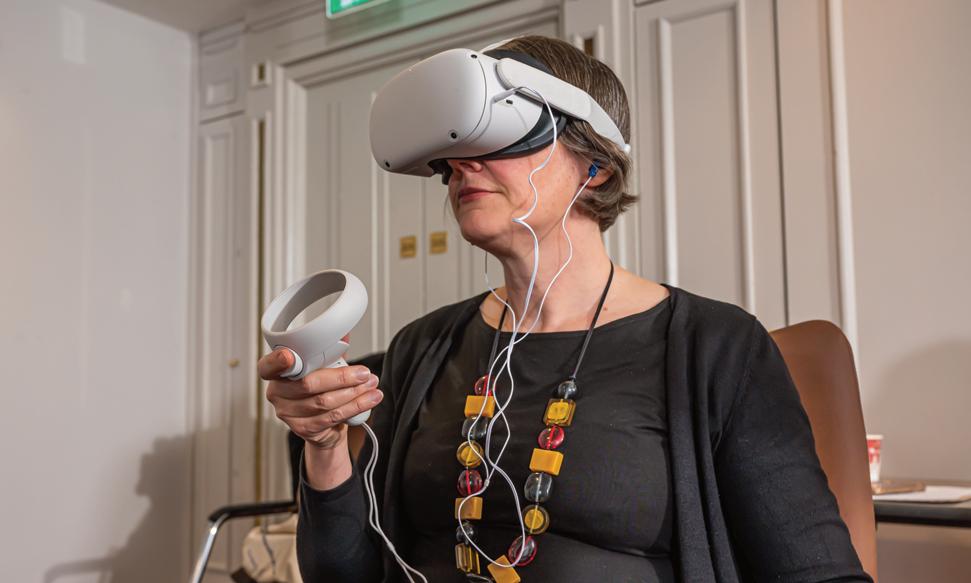

Graham Brownlow
Northern Ireland’s labour market inactivity rates have been consistently higher than 4



Graham Brownlow
Graham is senior lecturer in Economics at Queen’s Management School (QMS). His academic career has also included lecturing in Dublin, Auckland and Shenzhen, China. His research has several awards and prizes. He has provided commentaries for the Financial Times and The Guardian. Graham has been an editor of Irish Economic and Social History since 2012.
Ian Jeffers
Ian was appointed as the Commissioner for Victims and Survivors of the conflict in Northern Ireland in spring 2022. He has been in senior leadership roles in the private and voluntary sector for more than 25 years. Prior to taking on the role of Commissioner, he was the Deputy Chief Executive of The Prince’s Trust.


Ann Watt
Ann is Director of Pivotal; Northern Ireland’s independent public policy think tank. She is a former senior civil servant, who worked for 15 years in London in HM Treasury, Home Office, and Cabinet Office. Having returned to Northern Ireland in 2012, Ann was Head of the Electoral Commission for five years.

Emma Murphy
Emma is the President of Queen’s Students’ Union. She has previously served as education officer in the Students’ Union and graduated from Queen’s University with a BA in English Literature. She has participated in the Washington Ireland Programme, and has a background of representing students, campaigning on issues such as cost of living and climate activism.

Great Britain’s for the past 30 years. There is constant debate among economists as to what extent that longterm unemployment challenge of the ‘70s and ‘80s has evolved into the current challenge of inactivity. There are identifiable ways in which the past has shaped inactivity in Northern Ireland. For example, Declan French and Sharon Cruise in their work Disability and the Northern Irish Troubles, found that ‘the Troubles’ accounted for a 28 per cent rise in work-related disability in Northern Ireland. Putting a figure on it, they estimate an economic cost of £7 billion due to work disability. Given our current weak public finances, it is hard to see how the absence of an extra £7 billion, a healthier population, and subsequent increased tax revenue has not had an impact on public finances.

 Ian Jeffers
Ian Jeffers

It is very clear that we still have communities living in the shadows of the conflict. The same wards appear at the top of the league tables for deprivation time and time again. We have areas with totally different prospects and life chances just a stone’s throw away from


“That we are still segregated in our schools, our sports, and socially reinforces the fact that we have not moved one step forward with reconciliation.” Ian Jeffers
each other. Some might say that deprivation disparity exists in other countries too, but the fact is that we have an underlying challenge of the legacy of the conflict, which we have failed to address. As a result, we are in a spiral where we cannot keep the talent that we have. Young people want to leave home but unlike other regions, a disproportionate number never come back.
Ann WattIt is irritating to hear politicians sometimes dismiss the brain drain challenge that exists here as a general challenge, which also exists across the likes of England and Scotland. Our challenge is unique because not only do people not come back but we do not have an inflow of people to replace them. Our research tells

us that young people that left were able to evaluate their upbringing here and come to the conclusion that it was unusual to live in such a divided place. Growing up here it was normal for schools, social groups, and sports to be divided; but after experiencing places where there was no ‘identity check’, they did not want to return to being put in a box.
Graham BrownlowAs someone who did his first degree outside of Northern Ireland, I see it as totally natural for people to leave and go where best fits them and their studies. However, I also believe that Northern Ireland should be an attractive place to return to if the will is there. The danger for Northern Ireland is we create an economic model where people cannot return.
Emma MurphyThe fact that education is not integrated perpetuates a system of division and disparity. My lived experience is that when people from Northern Ireland go to university in Northern Ireland, they tend to stay in those same groups. That is an impact of the past on today’s society.

What role does multigenerational learning and the inclusion of children and young people on victims’ issues have in delivering a better future?


Ian
JeffersWe have limited teaching about ‘the Troubles’ in our schools, for various reasons, but the outcome is that many young people today do not fully understand why we have a divided society. By the same token, disparity in our communities means that even for those who grew up during ‘the Troubles’, their stories are very different. That we are still segregated in our schools, our sports, and socially reinforces the fact that we have not moved one step forward with reconciliation. Our young people, who have experienced a relatively peaceful Northern Ireland, are the ones to 4
“The opportunity for dialogue around shared experiences between communities is extremely limited.”
Emma Murphy
lead that mature conversation and discuss our shared experiences as a society.
Emma MurphyMy experience is that because of the limitations of teaching within schools, much of the learning around ‘the Troubles’ is oral history within families. That in itself raises challenges because there is no consensus. You may have someone with a distorted view, levels of overexposure or, in some cases even, under exposure, where trauma closes doors and prevents inter-generational conversation. The opportunity for dialogue around shared experiences between communities is extremely limited. That extends beyond here. My experience is that young people in the South or in England have a complete lack of understanding. However, I would say that for current generations, background is no longer as important, and that ‘identity check’ is happening less. That builds on the frustration around politics today because entrenched politics are not reflective of progression within society.
Ian JeffersUndoubtedly, our society is better for the levels of integration that now exist. However, we must be cognisant of the fact that there are still no-go areas in certain communities and there is still division. We must create an environment where people can have a mature and honest conversation about the past, in a safe space. Our research would suggest that young people are thirsty for information about the past and they want to hear it from all sides of the community. Unlike other post-conflict societies, like South Africa, we do not have a model for reconciliation, and we have not actually addressed the legacy of the past. Until we address that, we cannot move forward with prosperity.
In other societies, they drew a line. Take Germany for example, there were symbols and actions that were deemed unacceptable and that remains the case today. We have yet to do that. Just as ‘the Troubles’ cannot be an all-purpose excuse for our current challenges, the GFA should not be viewed as an allknowing solution. It was designed to be built upon. Issues like legacy were deliberately fudged and some issues we face today, like Brexit for example, could not have been envisaged. I think part of the problem is that we continue to try and improvise on that consensus reached in



1998, rather than build a shared consensus for society today.
Ann Watt
The GFA opens with a declaration of support from all the signatories and, while reading it recently, it struck me just how far those leaders were stretching themselves, and equally, how that spirit appears to be lost today. For example, it states: “We acknowledge the substantial differences between our continuing, and equally legitimate political aspirations. However, we will endeavour to strive in every practical way towards reconciliation and rapprochement within the framework of democratic and agreed arrangements. We pledge that we will, in good faith, work to ensure the success of each and every one of the arrangements to be established under this agreement.” If you look at our political situation and our political leadership, that spirit has been diluted down over the years and I do not know if we are willing to do the difficult things.
Graham
BrownlowThere are the obvious proximate issues we have alluded to such as productivity, inactivity, and mal-investment, but if we look at economic history in the long term, there are three ultimate sources of problems. It is worth noting that an overarching problem is an inability to correctly diagnose and mitigate these three problems. Firstly, Northern Ireland shares UK-wide economic challenges. Secondly, Northern Ireland has magnified
“Most of our young people are getting their education about the past from family and communities, and there is significant variation in our formal education approach.” Ann Watt
versions of UK problems. Thirdly, Northern Ireland has unique challenges because of its past, not least partition, violence, and trauma. The reality is that there is no single lever to solve these problems. We can debate the merit of each, but we have yet to form a solution that addresses all.

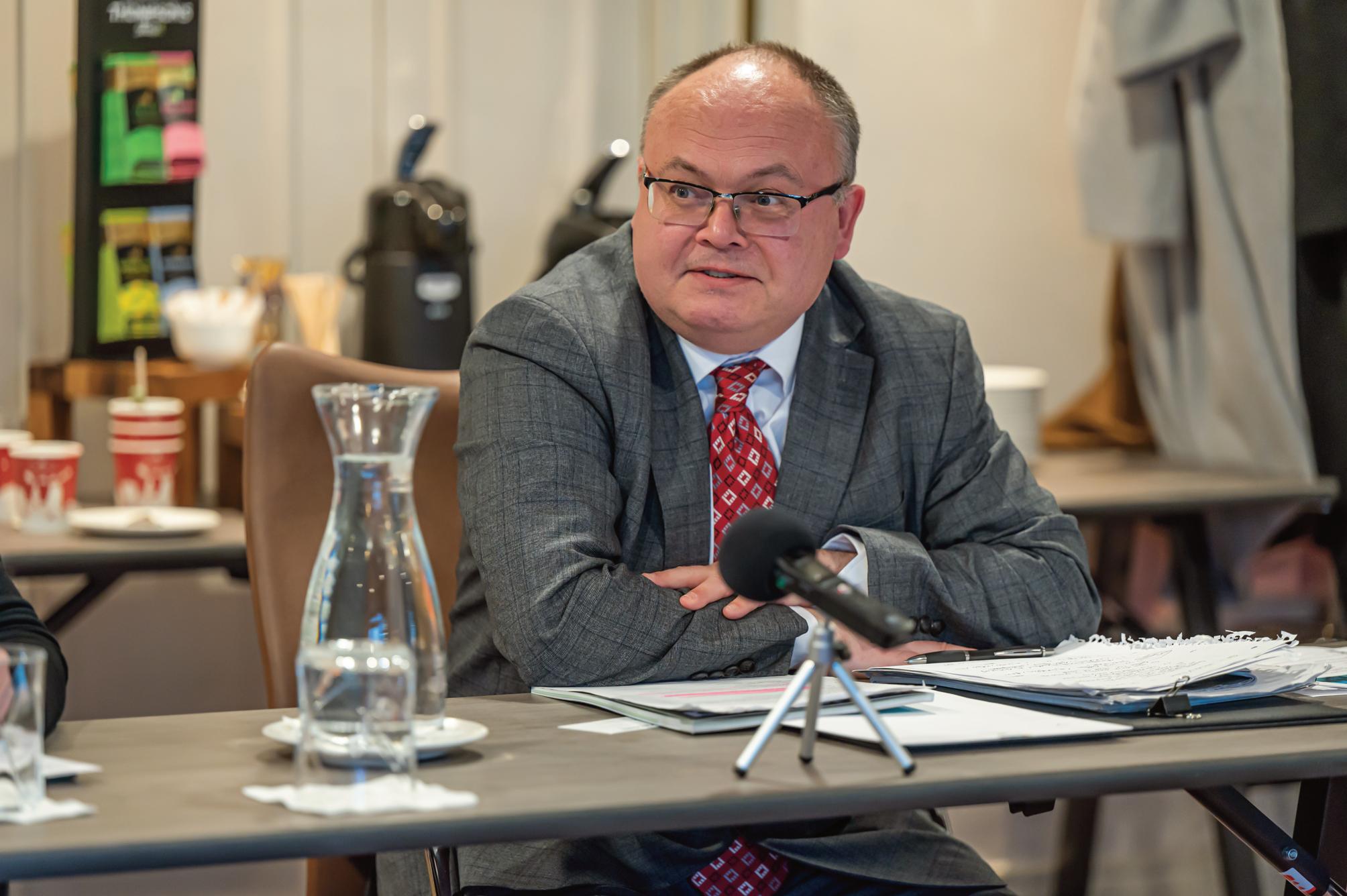 Emma Murphy
Emma Murphy
From a young person’s perspective, there is an imbalance in our public and private sectors, with opportunities in the private sector for those leaving education limited in comparison to other countries. The threat of not being accommodated in the labour market is driving the brain drain. There is also a challenge around regionality, with many career prospects concentrated in geography and specific industries. A plurality of options is key to attracting and retaining talent. An opportunity exists to grow our young population over the next decade, but we must do the groundwork if we want that to happen be that around infrastructure, transport, or accommodation availability.
Ann WattThe greatest barrier to economic growth is stability, particularly political stability. Any investors will tell you the importance of stability and of government-driven plans to deliver a workforce, infrastructure etcetera. Not only do we not have that long-term plan, but we do not have a government. The legacy of ‘the Troubles’ is apparent in so much of our economy from our transport systems and travel patterns, through to our built environment. Addressing climate change is both a huge challenge and a huge opportunity. We are already behind the curve, but our size, our geography, and
the generational shift in attitudes is fertile ground for an ambitious green agenda.
From your own perspective, what are the priority policy levers or areas of focus for contributing to a better future?

Graham Brownlow
The challenges are manifold and so the solutions must also be manifold. However, an area of priority should be education and human capital, in particular in the pre-school age bracket. Nobel laureate Jim Heckman won his prize in part for research which highlighted how pre-school education not only improves opportunity and aspiration, but creates better education, health, social and economic outcomes for society and reduces the required need for social spending.
Ann Watt
I agree that early education is key but would add that such education should be integrated. Most of our young people are getting their education about the past from family and communities, and there is significant variation in our formal education approach. That is not helped
by a segregated education system. We need to do much more to bring our young people together, on a permanent basis.
Emma Murphy
I would argue that more important than the policy is the willingness to implement change. New Decade, New Approach was welcomed with hope, but it has fallen down on many of its promises and as a result, people have become disillusioned. Even the greatest policy needs to be backed up with implementation and progress.
Ian Jeffers
Underpinning policy for the future must be the understanding that it is right for our young people. Policymakers must look into the eyes of our youngest generations and ensure that any action taken is based on their future. Only then will we be able to start shaping the future we all want.
“The danger for Northern Ireland is we create an economic model where people cannot return.”
Graham Brownlow


The Department for Infrastructure is targeting an incremental increase in electric vehicle charging infrastructure, ensuring that no resident in Northern Ireland is ever situated more than 25 miles away from EV charging infrastructure.
It is estimated that Northern Ireland residents are all currently situated within 30 miles of public electric vehicle charging infrastructure.
The action plan outlines six courses of action to be undertaken with the aim of helping Northern Ireland play its part in the UK’s goal of banning the sale of new petrol- and diesel-powered vehicles from 2030.
The goals for the action plan are: Futureproofing electrical capacity at key strategic sites along key transport corridors; a review of connection costs; the establishment of oversight group to ensure a co-ordinated approach to EV


infrastructure; paying for charge; consumer priorities; and the expanded usage of EV charging at park and ride sites.
The first course of action outlined in the action plan is the expansion of electrical capacity along key transport corridors in Northern Ireland, namely the motorways and dual carriageways.
The report states that the transition to electricbased transport, still in its infancy, will place a
significant increase on the demands of Northern Ireland’s electricity system, both in terms of demand and the expansion of existing infrastructure.
“At existing sites, charge point operators (CPOs) may wish to expand the provision of charge points to meet demand from EV users. We need to ensure the grid has the capacity to satisfy any forecast demand.
“We are also likely to see the emergence of heavier duty EVs within the commercial sector which are likely to require charging en route to keep moving. The requirements of heavier duty EVs are considerable with some suggestions that charging hubs would require a total power output of 3,500kW to meet the charging needs of the commercial sector.
“[The Republic of] Ireland will be complying with the Alternative Fuels Infrastructure Regulation which requires it to have suitable charging hubs every 60km along its TEN-T road network, with a total power output of 1,400kW by 2025, rising to 3,500kW by 2035.”

To meet the target of ensuring that all citizens are within 25 miles of electric vehicle charging infrastructure, the report outlines that the Department for the Economy will release a report outlining further details on reaching this goal in June 2023, including strategic sites which can be utilised to expand existing infrastructure.
The upcoming report will be underpinned by factors such as the cost which will be applied to the grid. The action plan further outlines a target of 1,000 EPVs in Norther Ireland by 2025, in addition to a target of enabling the provision of heavy-duty EV charging hubs every 60km, with a total power output of 1,400kW with one individual 350kW charger, increasing to a total output of 3,500kW with an individual 350kW charger by 2035.

It is intended that these infrastructure developments will be completed by December 2025.
In addition to upscaling its EV charging infrastructure, the Department for Infrastructure is aiming to conduct a review of connection charges for EV charging points, which currently stand at a similar level for consumers as in Great
Britain and the Republic of Ireland. The report states: “The cost of connecting to the grid is fully borne by a connecting customer for all works required at their connecting voltage and one voltage level above, including any required network reinforcement, and this is commonly referred to as ‘deep charging’ the connecting voltage on one voltage level above. Whereas, in Great Britain and [the Republic of] Ireland a larger proportion of these costs are ‘socialised’ across the customer database.”
To forward this proposal, a taskforce will be established which will carry out a review which takes Northern Ireland’s smaller consumer base and limited demand into account, ensuring that the system continues to incentivise the public to transition its mode of transport away from internal combustion engine vehicles to EV. This review will be published by December 2023.
Currently, access to EV charging points in Northern Ireland is dependent on possession of an ecarNI Access Card. The Department for Infrastructure

proposes abolishing this necessity in an effort to make the infrastructure more accessible, with an objective of establishing a pay-per-use system.
“The taskforce recommends that pay-foruse is introduced immediately by ESB on the current network as well as any future publicly accessible charge points whilst recognising that commercial entities may offer incentives to encourage use of their sites.”
The Department states in its action plan that this is to be established by December 2022, although it has not been confirmed, as of January 2023, whether this has been achieved.
The mechanism of introducing pay-tocharge is to be complemented by the expansion of EV infrastructure at park and ride facilities. “This is a new and emerging area for the provision of transport and has the potential to be confusing for consumers and could even cause consumer detriment in some cases if protections are not put in place.”
It is intended that this expansion will be implemented en masse by December 2024.

“The UK’s position is pretty weak internationally,” Giles says, pointing to OECD data that shows that the UK economy is the only one to have contracted in GDP terms between Q4 2019 and Q3 2022 when compared with Germany, Japan, France, Italy, Canada, and the United States. “The US is having a real boom, with more than 4 per cent growth over that period, but the UK is the only economy not to have recovered its prepandemic level and it is likely heading into a new recession. The Office for Budget Responsibility (OBR) in the Autumn Statement thought the UK would not hit its pre-pandemic level until the end of 2024; a whole parliament with no growth at all.”

Internally, Northern Ireland is doing “best or close to best across the UK”, a performance that Giles does not attribute to the

Protocol, but rather to the increased amount of government spending that has fuelled the UK economy in recent years. Northern Ireland’s greater dependence on public consumption when compared with Britain is “almost certainly” what is driving its “rather healthier position”, Giles explains.
The UK economy, Giles says, is suffering from a fusion of the economic challenges currently being experienced on both sides of the Atlantic. “The UK economy is suffering a little bit of the European problem – high energy prices and big supply shock –making us just poorer than we used to be,” he says. “And also, a bit of the US problem in that at the same time, we also have very low unemployment and an increase in inactivity, and so we have also got a bit of a domestic inflation problem, which is not seen in Europe but clearly seen in the US.

Economic forecasts say that UK GDP will now not reach its pre-pandemic levels again until the end of 2024, meaning an entire parliament with no growth at all, says Chris Giles, Economics Editor of the Financial Times.
“The outlook for economic growth has deteriorated sharply since March 2022. With that pessimism on growth, we are also seeing inflation expected to come down (in 2023) because we are expecting not to see continued rising in energy process and the big increases will fall out of the annual comparison. Bank of England projections forecast inflation over 10 per cent for the next six months and then coming down it is quite gradual and only gets to the 2 per cent target in 2024, meaning there will be another period of households really feeling the pinch.”
80 per cent of all products are currently rising at a rate higher than the Bank of England’s 2 per cent target, more similar to the US than the EU, meaning that there is ingrained inflation in the system rather than simply being a case of increasing energy prices.
“The inflation picture means there is more for the BoE to do, and it needs a recession,” Giles says. “It needs everyone to feel some pain, so that workers do not seek higher wages and companies do not seek to raise prices very rapidly.”
Private sector wages are currently rising at 7 per cent, lower than inflation at 11.1 per cent but higher than is sustainable for a 2 per cent inflation target. This is said

to be “concerning” the Bank of England and is one the reasons interest rates are “certain” to rise from their current 3 per cent rate. Public sector wages, however, are only rising at a rate 2 per cent, creating an unsustainable gap between public and private wages.
“The consequence of wages in total rising quite rapidly but too rapidly for controlled inflation is that living standards are falling and falling rapidly,” Giles explains. “The latest forecasts for household living standards are that we
are likely to see a 7.1 per cent decline, the largest since records began, back to a level last seen in 2013. It is expected to recover but households are expected to go through a difficult period for 2023.”

With household finances in difficulty, the same is true of government finances: from March to November 2022, the deficit forecast has increased from £30 billion to £80 billion. Driving this is higher debt interest spending, rising by £44 billion in
“Bank of England projections forecast inflation over 10 per cent for the next six months and then coming down it is quite gradual and only gets to the 2 per cent target in 2024, meaning there will be another period of households really feeling the pinch.”
sector wages are falling behind those in the private sector
medium term, but even with tighter planned public spending after 2025, the level of borrowing is forecast to be much higher than expected as recently as March 2022.
“Debt is going to get very close to 100 per cent of GDP,” Giles says. “We used to think that it should not get above 40 per cent in the 1990s, all the way up to the financial crisis, but now we have had three ‘once-in-a-lifetime’ events one after another where government has had to borrow in the global financial crisis, the Covid-19 crisis, and the energy crisis.”
In attempting to combat the pessimism of the majority of current economic stats, Giles points to gas prices, which have fallen sharply, from €300 per MWh down to just above €100 per MWh. Reasons for such a notable drop include a concerted effort in Europe to conserve gas and to curb consumption – for example, German industrial consumption in gas is down almost 35 per cent on last year without a fall in output – and storage levels are now higher than any time in the last four or five years.
just one year. “These are very large increases in debt interest. The State and all of us together are having to pay for government debt,” Giles says.
“The tax receipts are expected to be quite weak because the economy is expected to be weak. Welfare spending, particularly on pensions and other nonpension benefits, is likely to rise, again
making the deficit worse, partly because inflation is high and the Government is going to pay increases in benefits according to inflation, but also a weak economy sees more welfare spending on unemployment and inactivity, particularly on disability payments at the moment.”

Offsetting those factors were some tax increases and spending cuts in the
“In the UK, the energy crisis is likely over, and we had a self-inflicted crisis with the September 2022 ‘mini budget’ having the largest unfunded tax cuts in many years, which had a devastating effect on the UK’s borrowing cost,” Giles says. “Even that is now beginning to get better. With Liz Truss gone, we see the increase in the UK’s borrowing cost has fallen away. At the time of the mini budget, the UK was having to pay 1.5 percentage points more for its borrowing than usual. That is an enormous premium. There is scope to improve the public finances with the interest costs coming down in the future forecasts, which would make some of the austerity and tax increases not entirely necessary.”
In conclusion, however, Giles returns to a more a pessimistic note to reflect on the difficult times at present and in 2023: “There is no doubt that the year ahead is going to be very difficult. There will almost certainly be a recession, not necessarily a hugely deep recession, but it will not be the easiest time for the UK economy over the months ahead.”



no suitable product or solution already available on the market.
We have a budget of around £3 million per year and we typically fund around 20 projects each year.
Over the years we have funded projects such as:
• Education Authority projects to improve support and outcomes for children with special educational needs, and to measure carbon emissions produced by their network of buildings and vehicles;
• a CCEA project to develop intelligent crowd sourcing of questions for post primary examination and assessment;
• Department of Health projects addressing early identification and intervention for the prodromal or prepsychotic phase of schizophrenia and optimising the provision of speech and language therapy to meet NICE guidelines following a stroke; and
• a Forensic Science NI project to rapidly visualise and identify bodily fluids on a range of substrates within a forensic science environment.
SBRIs are all about solving the wicked problems faced by the public sector. If you need a solution to an issue your organisation is facing and cannot find a solution to it on the market, why not get in touch?
SBRI provides the public sector with innovative solutions to problems that will drive improvement, and allows suppliers to develop products and services working collaboratively with the public sector, enabling them to develop new skills, expertise, and markets. Launched in Northern Ireland in 2009, the programme supports diverse projects across the public sector.
The process is straightforward. Once you have identified exactly what the challenge is and established that there is nothing suitable currently on the market, you can apply for SBRI funding. They will then run an open competition for ideas, with the best three or four funded to develop a proof of concept. Successful ideas can then be developed in the next funding phase to create a solution which is tailored to your
organisation’s needs and can be procured. This model minimises risk to both you and the supplier.
Any public sector organisation (department, arm’s-length body, local authority) can apply for SBRI funding. Projects can be funded where there is a demonstrable need for an innovative solution or product, and where there is
Our expert team is highly experienced in dealing with all aspects of SBRIs and can provide you with the advice you need.

Do you face an issue that you think could be solved using technology, but cannot find the right product? That could be because there is not anything currently on the market that is suitable. If so, the Small Business Research Initiative (SBRI) could be just what you are looking for.The SBRI/NI team at recent NICON 2022.

Above normal temperatures in October 2022 and in the first half of November 2022 effectively delayed the start of the heating season in Europe, giving the region a brief relief after recordhigh gas prices at the end of August. However, the gas market remains tight, and the continent needs to prepare for a difficult winter.
In the period from January to November 2022, total supply to Europe (EU27 + UK) was 16 per cent lower than at the same time in 2021. Most of the decline has occurred since May as Russian supplies via Belarus, the Baltics, and Finland, and Nord Stream gradually stopped, with only flows via Ukraine and TurkStream remaining from September. Pipeline imports from other sources (Norway, north Africa, and Azerbaijan) have been relatively stable, as was indigenous production. A significant increase in LNG imports (+67 per cent) has helped to balance the regional market, becoming the single largest source of supply to Europe in 2022 (Figure 1).


Gas demand remained relatively resilient in 2021 but started to collapse in 2022 (Figure 2). Warm weather at the beginning of 2022 and similarly, at the beginning of the winter season 2022/23, limited the need for gas use in space heating this year. Continued high gas prices have also triggered demand response both from small consumers and larger industrial users. By contrast, gas used for electricity generation has increased year-on-year due to continued low availability of nuclear and hydropower.
On a positive note, gas storages were 95 per cent full at the beginning of winter, which together with strong LNG imports and low gas demand provided downward pressure on gas prices in October and November. However, with the arrival of cold temperatures, gas prices are rising again.


Europe needs to anticipate another difficult winter in 2023/24 and measures need to be taken now, writes The Oxford Institute of Energy Studies’ Anouk Honoré.
Over the next 12-18 months, indigenous production and pipeline imports are unlikely to increase. Pipeline flows could even be lower with Russian pipeline supply at a downside risk relating to transit via Ukraine. There is some upside potential for LNG supply due to new import capacity (in particular, the FSRUbased import capacity in the Netherlands and in Germany will contribute to ease congestion in northwest Europe). However, demand for LNG outside Europe and competition for cargoes during the winter and into the summer 2023 will be an important uncertainty, especially if Chinese gas demand picks up again with the end of lockdowns. Therefore, additional gas demand reduction will be needed in Europe to limit the risks of shortages in the coming weeks. The EU and national governments face a hard balancing act: incentivising customers to save energy while, at the same time, protecting them from the worst impacts of record-high gas and energy prices. Key factors to keep an eye on include the willingness and ability of consumers to change their behavior to use less energy, the pace of return of French nuclear reactors in December 2022, and the evolution of temperatures: a cold winter being likely to derail most demand-response measures.
The level of gas in storage at the end of this winter is probably the most important element to understand the short-term


Note: Negative number for storage indicate more injection than withdrawal
Source: ENTSOG Transparency Platform; Eurostat; Gas Infrastructure Europe (AGSI); Kpler LNG Platform –Data compiled by Dr J. Sharples (OIES)
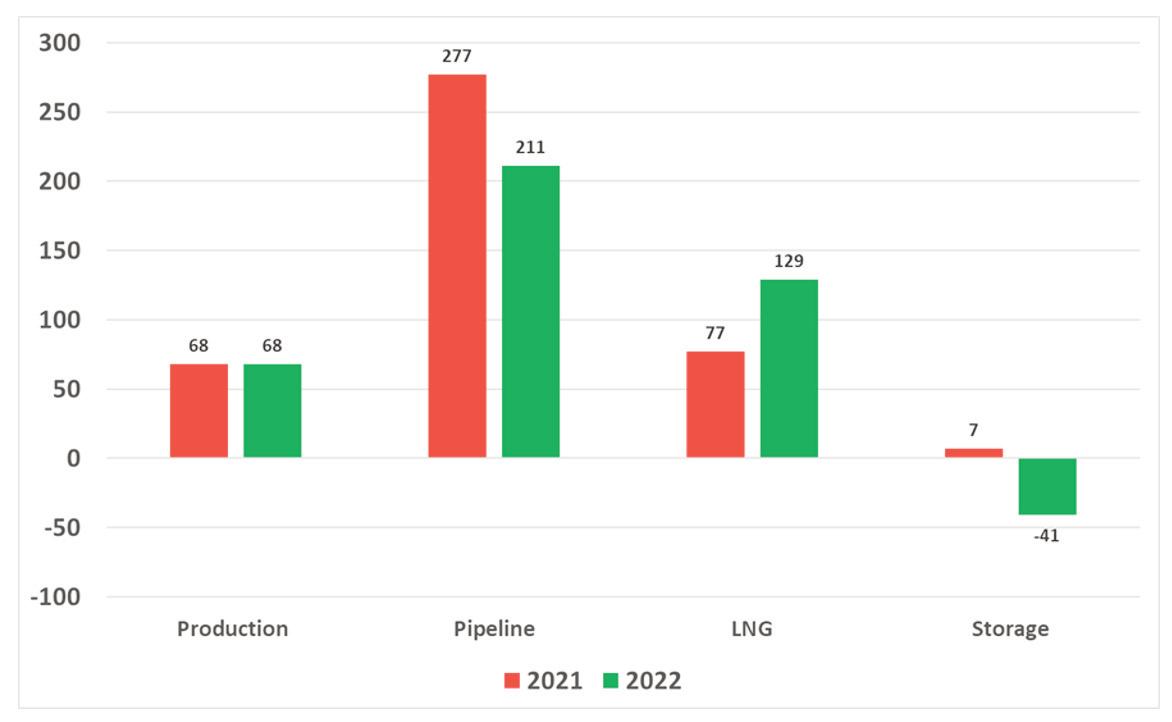
Figure 2: Monthly natural gas demand in Europe (EU27 + UK), bcm

Source: IEA, Eurostat, Entsog, GRTgaz, Terega, NCG, Gaspool, SNAM, Enagas, NationalGrid – Data compiled by and completed with Honoré’s assumptions (OIES).
European gas outlook. In summer 2022, the EU refilled its storages thanks to 30 bcm of Russian pipeline gas and lower LNG imports by China. Two factors that are unlikely to be repeated in 2023. With limited options for additional supply, storage replenishment in summer 2023 will be more challenging.
Gas consumption will influence storage withdrawals, and more importantly, the level of gas left in storage at the end of winter (1 April 2023). The 15 per cent voluntary reduction of winter demand already agreed by EU member states would put the region on the right track to be able to replenish the stocks to 95 per cent by the beginning of winter 2023/24,
with limited additional supply needed for storage injections. This would also provide downward pressure on gas prices next year. In the context of tight global LNG market to 2025/26, measures to lower gas demand in Europe will benefit consumers and European economies this winter, but also, very possibly, for the next three to four winters.
Anouk Honoré is a Senior Research Fellow and Deputy Director of the Gas Research Programme in the Oxford Institute of Energy Studies.

A productivity gap of some 40 per cent per worker has emerged between the Republic of Ireland and Northern Ireland in the past 20 years, highlighting the importance of within-sector productivity failings in Northern Ireland.
A new research report by the ESRI, examining sectoral productivity differences between the Republic of Ireland and Northern Ireland, has found that despite broadly equivalent productivity levels between the two regions in 2000, over the past two decades a noticeable gap has appeared as levels in the Republic trended upwards while levels in Northern Ireland have trended down.

Deemed as the first comprehensive study to compare productivity in Ireland and Northern Ireland, the ESRI study purposely excludes economic sectors with high concentrations of multinational companies which are recognised as having a distortionary impact.



That productivity in Northern Ireland is comparatively poor compared to neighbouring economies has been well evidenced in recent years. However, almost all efforts to

*Excluded sectors are CC (Wood, paper and printing), CD-CE (Manufacture of coke and refined petroleum products, Manufacture of chemicals and chemical products), CF (Manufacture of basic pharmaceutical products and pharmaceutical preparations), CI (Manufacture of computer, electronic and optical products), CJ (Manufacture of electrical equipment), CK (Manufacture of machinery and equipment n.e.c.), CM (Manufacture of furniture; jewellery, musical instruments, toys; repair and installation of machinery and equipment) and J (Information and communications).
measure productivity in Northern Ireland have focused on comparisons with other UK regions. Latest figures show Northern Ireland’s productivity to be around 17 per cent below the UK average, the lowest of any UK region. This is significant in the context of a UK economy which in itself has seen productivity growth stagnate over the last decade.
Productivity is considered key to an economy’s long-run performance, with higher productivity associated with higher wages, and ultimately better living standards.
Modelling productivity levels in Ireland and Northern Ireland, authored by Adele Bergin and Seamus McGuinness, exploits annual sectoral-level data on labour productivity measured by gross value added (GVA) per worker and models the determinants of productivity in each respective region.

Comparing 17 sectors, the report finds that 14 sectors in the Republic noticeably outperform their northern counterparts in productivity levels.
Particularly large gaps are highlighted in areas such as administrative and support services activities; financial and insurance activities; legal and accounting activities; and scientific research and development.
Northern Ireland only has an advantage in two sectors: Electricity and gas supply, and construction.
Most significant is the scale of the gap which has emerged since the year 2000, when productivity levels in the two regions were broadly equivalent. The research estimates that by 2020, productivity per worker was approximately 40 per cent higher in the Republic compared to Northern Ireland.
Outlining the major factors in the Republic’s performance, the research highlights a







trend between increased sectoral productivity with levels of investment and also, the employment share of educated workers.
Additionally, productivity tends to be higher in sectors where there is a greater proportion of part-time workers employed, while export intensity is an important factor in driving Irish productivity.
Most notably, the report found “no evidence of a causal relationship between the range of factors captured”, despite using comparable data sources and applying the same estimation methods used for the Ireland model in areas such as education, investment and exports.
The report states: “Such an outcome raises questions regarding the underlying competitiveness of the Northern Ireland economy and its responsiveness to changes in what are generally considered key policy levers.”


Highlighting that the models for Northern Ireland do not show significant results for the usual drivers of productivity levels, the report suggests that a range of other factors including limited results from regional policy and historical reliance on public sector employment have all combined to “subdue the impact of market forces among Northern Ireland firms leading to a productivity trend that appears largely exogenous with respect to key policy variables”.
Utilising a separate modelling approach in an attempt to understand why the two economies are not functioning the same way, despite similar sectoral employment, the research finds that differences in investment and labour
market-related endowments can explain almost all of why the Republic’s productivity levels were 30 per cent higher by around 2011.
Breaking that productivity gap down further, the authors suggest that the largest cause of the gap relates to lower levels of investment (22.7 per cent per worker); and lower proportions of workers educated to post-secondary level in Northern Ireland account for a 15 per cent gap.
Simulating how productivity in the Irish economy would fare if operating with the same levels of investment and human capital currently employed by Northern Ireland firms, the research outlines that the level of productivity would be around half its current productivity level.
Responding to the report, David Jordan research fellow with the Northern Ireland Productivity Forum at Queen’s University Belfast, says that the failure to translate a reduction in Northern Ireland’s ‘brain drain’ of graduates into improved productivity suggests other aspects of human capital may now be increasingly important, including workforce skills. Additionally, he highlights the author’s conclusion that Northern Ireland’s economy has failed to respond positively to increases in education, investment and export intensity, suggesting that other barriers to productivity exist.
“The report supports the view that there is no single cause of Northern Ireland’s low productivity. A greater understanding of the barriers to productivity growth is therefore needed if Northern Ireland is to emulate Ireland’s success,” he concludes.
“Comparing 17 sectors, the report finds that 14 sectors in the Republic noticeably outperform their northern counterparts in productivity levels.”



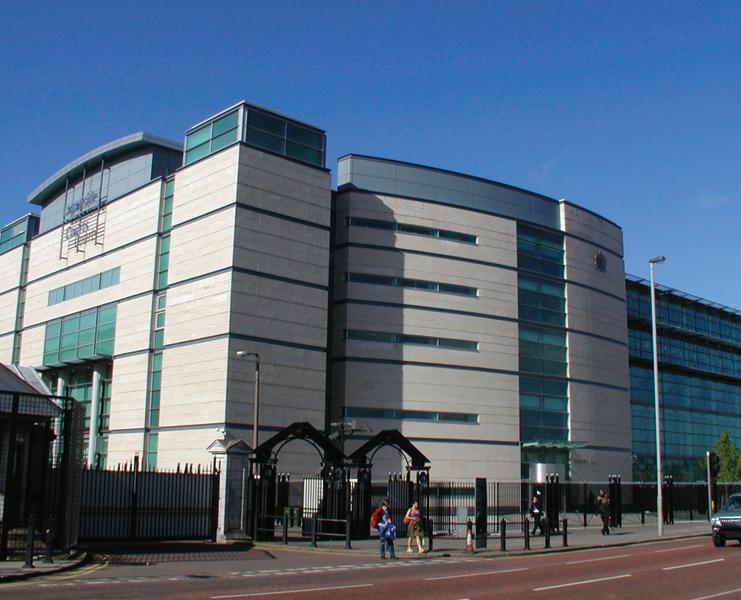





Richard Pengelly, Permanent Secretary at the Department of Justice, discusses the challenges facing the justice sector in Northern Ireland and how the Department will endeavour to deliver and maintain services in the years ahead.

Whilst the last number of years have been challenging for many reasons, not least due to Covid-19, the Department of Justice and its agencies continued to demonstrate determination, drive, and resilience to maintain essential services safely.

This included delivering an effective justice system and supporting local communities in addition to producing significant policy and legislation.
The Department of Justice provides a crucial role to people within our society and as we move further forward into 2023 there will continue to be many challenges for the justice sector as a whole.
Our departmental plan, which is cognisant of budget restrictions, lays out our intentions for the three-year period from 2022 to 2025 and is an ambitious plan to advance the justice agenda.
The plan focuses on the four themes, pertinent to the Northern Ireland justice sector, and enables us to focus our efforts where they are most required:
• support safe and resilient communities;
• address harm and vulnerability;

• challenge offending behaviours and support rehabilitation; and
• deliver an effective justice system.
One of the main focuses of the Department is providing additional safeguards and support to some of the most vulnerable people in our society, including victims of domestic and sexual abuse, and exploitation.
Work to implement provisions contained within the significant legislative programme introduced in the last mandate is continuing. This includes preparing for the introduction of new domestic abuse protection notices and orders and stalking protection orders, as well as new offences of non-fatal strangulation, adults masquerading as a child, upskirting, downblousing, and cyberflashing.
The Department remains committed to challenging and addressing societal attitudes and behaviours that contribute to domestic and sexual abuse in our society. Tackling domestic and sexual abuse continues to be a priority as indicated by recent public consultations on significant strategies such as modern slavery and human trafficking; and a new domestic and sexual abuse strategy, which will span a seven-year period.
Both challenges have the potential to affect and impact on each and every one of us in society and the consultation processes enable all interested parties to have their say and shape the future of the strategies and in doing so to also make a contribution towards ending gender-based violence more widely.
The Department has also been progressing work to implement recommendations aimed at improving the criminal justice system response to addressing hate crime in law and providing redress to victims and survivors.
In developing a future hate crime bill, a phase one public consultation has been completed on several proposals relating to how hate crime is addressed from investigation to conviction and elements of stirring up hatred offences. Work on policy development for themes to be included in phase two of the consultation has also commenced with the intention of consulting on these issues in 2023, subject to the return of ministers.
These initiatives will build on the extensive provision the Department already makes through legal aid to facilitate access to justice for the most vulnerable in society. There continues to be progress on the Northern Ireland Courts and Tribunals Service’s Vision 2030 modernisation programme. This is aimed at modernising our courts and tribunals and is being progressed alongside efforts to speed up our justice system.
The past few years have been particularly challenging for prisons in Northern Ireland, with the pandemic having a profound impact on the Northern Ireland Prison Service (NIPS). Despite these challenges, the NIPS maintained levels of service that kept those in our care as safe as possible from Covid-19. The professionalism and dedication of those staff is evident and I applaud them for their efforts. There is, of course, work to be done to return our systems to pre-Covid levels and there are ongoing efforts to do this.
Added to those challenges is the increasing prisoner population. Before Christmas, the prison population reached 1,750 – a level we have not seen in Northern Ireland in a decade. This must be considered against the challenging budgets everyone in the public sector is facing.
However, the Prison Service is very focused on meeting those challenges and has recently published its roadmap for continuous improvement, Prisons 25 by 25 This is an ambitious programme, and it is important that the NIPS is given every possible support as it continues that work.
In conclusion, the Department of Justice provides a crucial role to people within our society, and we will continue to work closely with colleagues across the sector to maintain services and develop and deliver much needed reform in the coming years.
“The Department remains committed to challenging and addressing societal attitudes and behaviours that contribute to domestic and sexual abuse in our society.”
Richard Pengelly, Permanent Secretary at the Department of Justice
Northern Ireland, the Republic of Ireland, and Great Britain.
Increasingly, barristers are retained to act in cases outside the conventional courtroom setting such as alternative dispute resolution, arbitrations, tribunals, disciplinary hearings, and a broad spectrum of public and private inquiries.
The strength of the profession has been tested in the face of some adversity over recent years when existing pressures became further heightened as a result of the pandemic.
Waiting lists for court appearances have reached chronic proportions. There is real concern that many across society will experience the reality that justice delayed is justice denied.
Legal professionals have shown enormous adaptability and creativity to keep the system operating to the best of their ability. This has taken its toll on barristers as a committed and dedicated group of professionals, but their commitment to serving their clients and supporting the administration of justice has remained undimmed.
Technology has improved the efficient disposal of straightforward matters, and this will help in dealing with the backlog and delivering efficiencies. However, the use of technology in this way must always be measured and appropriate.
The Bar of Northern Ireland comprises over 600 self-employed barristers in independent practice. It is a profession which upholds the rule of law and plays an important part in supporting the economic and social wellbeing of the jurisdiction.


Serving the public interest without fear or favour, barristers draw on their expert knowledge of the law, advocacy, and litigation to represent the best interests of clients. As independent experts, our barristers practice across all areas of law in all courts and tribunals in
The interests of justice and the rights of participants, including their article 6 rights, must be protected. Studies have shown that technology can prove illsuited to complex cases where sensitive and contested issues are at stake. Indeed, rather than enhancing access to justice, certain changes can introduce
Chief Executive of the Bar of Northern Ireland, David Mulholland writes for agendaNi on the societal and economic benefits being delivered by barristers, as legal experts at the front-line of our justice system.
impediments to the proper conduct of proceedings.
Justice must be done and be seen to be done. It must not be a distant, compromised or remote experience for those involved in complex cases. Further reforms must be designed in close consultation with legal practitioners, considering the needs of their clients.
Access to justice is a fundamental principle of the rule of law which protects society’s most vulnerable and enables citizens to effectively exercise their rights. Our courts must be accessible to all, not simply because individual parties in a dispute can afford it or are somehow considered to deserve the benefit.
For too long the legal aid conversation in Northern Ireland has focused on cost. This has overlooked the wider societal and economic benefits brought about by appropriate investment in our justice system. While organisations such as the World Bank have evidenced the economic value of legal aid, a narrow focus on cost alone overlooks the human value and dignity of people who require legal aid to help them cope with challenges that they cannot face alone. There must be a strategic direction and stability in Northern Ireland’s legal aid policy to ensure that it is properly recognised as an indispensable part of our justice system and an integrated part of our social welfare provision.
Research from the Joseph Rowntree Foundation on Poverty in Northern Ireland (2022) shows that, as Northern Ireland entered the pandemic, nearly one-in-five people lived in poverty, including over 100,000 children and 190,000 working age adults.
The cost-of-living crisis looks set to plunge more people into poverty. We must enshrine access to justice during these difficult times.
Policymakers must recognise the value and meaning of justice to our society given the important matters of public interest at stake. Legal aid is a means through which to address deserving and fundamental matters of real human concern that impact across all communities and that have far reaching societal and economic impact if not properly addressed.
The Bar of Northern Ireland is, thankfully, more diverse that at any point in our history. However, there is more work to be done to ensure that our profession is truly representative of the society that we serve.
The Bar is proactive when it comes to diversity – we have for many years undertaken a range of initiatives aimed at supporting new entrants to the profession.

The Bar of Northern Ireland is a part of the QUB Bright Future Collective, which supports talented young people to study Law at Queen’s through a widening access scheme called the Pathway Opportunity Programme.
The Bar Council is also proud to support the Lord Kerr Scholarship, providing financial assistance to law students from underrepresented backgrounds.
Our focus does not simply rest with those entering the profession. The Bar of Northern Ireland has received a bronze award from Diversity Mark NI and is giving increasing priority to the need to improve retention and advancement of female barristers. To that end, we have introduced various policies and practical measures to effect some positive change including a new Legal Diversity initiative with support from the Lady Chief Justice.
We are committed to promoting a truly representative Bar and working with policy and decision makers to ensure a sustainable system as we enter a new century of law in our jurisdiction.
T: +44(0) 28 9024 1523
E: contact@barlibrary.com
W: www.barofni.com
Twitter: @TheBarofNI
Linkedin: The Bar of Northern Ireland
"Access to justice is a fundamental principle of the rule of law which protects society's must vulnerable and enables citizens to exercise their rights."
Director General of the Northern Ireland Prison Service (NIPS), Ronnie Armour, talks to David Whelan about the challenges of a growing prisoner population with broader complex needs, necessitating a new ambitious continuous improvement programme for 2025.


Armour is in no doubt of the two major challenges facing the NIPS currently. The first is a rising prison population. Currently, around 1,700 people are in the care of prisons in Northern Ireland, some 200 more than prisons are funded to facilitate.
The second challenge identified by the Director General is the increasing complexity of the needs of the prison population, highlighted by recent figures which show some 34 per cent of the people currently in prison custody have been diagnosed as having a mental health issue, and more than half have a history of self-harm.
Undoubtedly, Covid-19 and its impact on the speed of the justice system has played a role in the rising prison population numbers, evidenced by the fact that over 38 per cent are on remand and without conviction.
Armour explains that it is in recognition of these challenges that the Prisons 25 by 25 continuous improvement programme has been introduced. The programme is a follow up to the NIPS’ Prisons 2020 programme, a first continuous improvement programme, under which 96 per cent of 282 commitments were achieved. The
programme led to then-Justice Minister Naomi Long MLA describing the transformation of the Northern Ireland’s prisons as “remarkable”.
“The Northern Ireland Prison Service has, over the past five years, been on an exciting journey. Our objective is to ensure NIPS is and remains a modern progressive prison service that is competent, confident, and compassionate,” explains Armour.

Successive inspection reports have highlighted consistent and considerable improvement in Northern Ireland’s prisons, albeit from a low base. In 2016, for instance, a joint assessment by HM Inspectorate of Prisons and Criminal Justice Inspection Northern Ireland (CJINI) declared Maghaberry as the most dangerous in the UK.
Armour says that the success of Prisons 2020 is best evidenced through the management of the pandemic. Globally around 4,000 prisoners died of Covid-19, 200 of which were in the UK, and tens of thousands were hospitalised. The Director General expreses pride that no one in Northern Ireland’s prison population died or was hospitalised with Covid-19 during the pandemic.
“The work we did under Prisons 2020 put us in a really good place because we were able to manage Covid in a competent way and we were in a position to take confident decisions, supported by our Minister. Our early release scheme, for example, helped us manage the prison population and I think underpinning everything we did was the compassion for people in our care,” he explains.
“However, we cannot stand still as an organisation. I have been clear that recovery is and will be challenging. Prisons 25 by 25 is critical to that recovery, delivering a route map for the next three years to build recovery, improve the organisation, and ensure that we remain high performing.”
Prisons 25 by 25 is built around five key pillars, underpinned by 25 key objectives or priority areas.
Addressing talent management, Armour acknowledges that the rising prison population necessitates additional staff. Currently, NIPS is some 60 operational staff below the optimal numbers but Armour stresses that work is underway to address the shortfall through recruitment.
Quizzed on whether the role of the prison officer is an attractive one, the Director General believes that work over the past five years has helped increase awareness of the role of the prison officer, beyond the traditional view. “This role is about so much more than locking people up, it is about unlocking people’s potential. Our prison officers work with people and make a difference in their lives daily. The previous Criminal Justice Inspector highlighted the importance of relationship building between staff and those in our care, and it has been a key focus for us. We are working constantly to ensure our staff are equipped the best way possible to do that.”
Armour outlines significant plans for staff
development over the coming years, building on future leadership programmes rolled out under Prisons 2020 in relation to succession planning and upgrades to the large volume of mandatory training delivered on an annual basis.

In October 2022, Armour, along with thenJustice Minister Naomi Long MLA opened a new staff wellbeing hub at Maghaberry Prison, aimed at ensuring staff “receive the wellbeing support, recognition and development opportunities deserving of the role”. Armour acknowledges the stressful environment prison officers operate in and believes that greater complexities in the prison population is making the role more challenging.
“Looking after the wellbeing of our staff must be paramount. I believe in the past we did not do enough but the purpose-built hub is evidence of our commitment. Over the course of Prisons 25 by 25, we will be providing wellbeing facilities in our other prisons.”

In 2022, Belfast Met, working with North West Regional College (NWRC), delivered almost 1,800 qualifications across a broad curriculum of essential skills from entry level one to three. The Director General highlights that the pandemic proved disruptive to education and skills delivery but believes significant progress can be made in the coming years, following the signing of a new service level agreement between NIPS and Belfast Met.
The Director General stresses the importance of education and skills delivery in the context of rehabilitating prisoners for release back into the community, with the opportunity to gain meaningful employment.
It is estimated that almost three-quarters of the prison population left school between the ages of 14 to 16 and at least half have no formal qualifications. Under Prisons 25 by 25, plans are underway for NIPS to shortly
pilot the launch of employment advisory boards, identifying and linking people to employment opportunities when they leave prison. Supporting the Department for Communities’ work coaches who already operate in prisons assisting individuals to find employment and supporting them post release.
However, Armour is quick to point out that challenges also exist in terms of education and skills programme delivery. Engagement is understandably difficult with those almost 40 per cent of the prison population on remand, while roughly 52 per cent of those who eventually get custodial sentences are in the care of NIPS for 12 months or less.

Beyond education, Armour believes that other services within Northern Ireland’s prisons have and will continue to improve. The recent release of an award winning short film My Name is Joseph has shone a spotlight on past failings within prisons. The film centres around the story of Joseph Rainey, a 20-year-old from west Belfast, who attempted to take his own life just hours after being received in Hydebank Wood Young Offenders Centre in 2013. He died in hospital 10 days later. In February 2020, a 10-day inquest into the circumstances around his death delivered findings of six institutional failures on transfer to and reception into prison; three institutional failures in the healthcare interview on his arrival; and six institutional failures in relation to a lack of care and failure to implement previous recommendations.
In addition, the findings included systemic failures in staff training, suicide awareness, essential documentation, and the observation of prisoners at risk.
Expressing his regret at what happened in 2013 and extending his sympathies to Joseph’s family, Armour stresses his belief that the Northern Ireland Prison Service of 2023 is much changed from that of 2013. Highlighting that despite a rising prison population, incidents of self-harm are down 15 per cent between 2018 and 2022, Armour believes that fundamental changes to processes, particularly the Supporting
People at Risk (SPAR) programme, has been central to the collective work identify people in crisis and getting them appropriate care.
Using Hydebank Wood College and Women’s Prison as an example, he says; “We take a very person-centred approach in terms of our interactions. When people arrive, we create a prisoner needs profile to better establish an understanding of the causes of their behaviours and indeed, their offending. Additionally, we have development plans for each individual. Innovative approaches to people in crisis has seen us introduce the use of therapy dogs and the development of specific areas and landings working with people with challenging behaviours.
“The improvement work that staff have undertaken has undoubtedly contributed to safety at Hydebank, thankfully no one has lost their life there since 2013.”

In its latest inspection, a 2019 report on Hydebank saw it achieve 15 out of 16 marks, with highest possible marks in the categories of safety and respect.
Under Prisons 2020, the Northern Ireland Prison Service delivered Davis House, a modern £54 million accommodation block at Maghaberry. Additionally, as part of long term planning some redevelopment work of Magilligan Prison is underway and a new learning and skills centre was established at Hydebank, which Armour says is “on par with any further education college in the community”.
Armour describes “ambitious” plans for the prison estate in the context of a difficult investment arena. To this end, he outlines plans to underpin planned larger investment projects with a range of smaller projects aimed at continuous improvement. Examples set out by the Director General include a recently completed stores building and chapel and Magilligan, as well as a project to upgrade the power supply. A new committal unit is planned for Maghaberry.
More broadly, he describes ambitions for the rollout of biometric technology currently in use in Davis House, across the estate, the formalisation of the use of virtual visits introduced in response to Covid-19, and the introduction of a new telephony system in almost all cells.
Just as prisons undergo the same financial pressures as other public services, so to do they have an onus to help reach public service-wide targets, such as the 30 per cent reduction in net energy consumption aimed for by 2030.
“We recognise that as a large energy user, we have an important role to play in the wider move towards decarbonisation of public services. Recent successes include a 24 per cent reduction in fossil fuel use since 2017, alongside a 5 per cent reduction in electricity use, and a 10 per cent reduction in water use. Additionally, our carbon emissions are down 44 per cent, and we have seen a 16 per cent reduction in our waste to landfill.
“This is work we started under Prisons 2020 and while progress has been positive, we realise that we have more to do around our sustainability agenda.”
In early 2022, a review into the operation of care and supervision units (CSU) in the Northern Ireland Prison Service by Criminal Justice Inspection Northern Ireland was highly critical, highlighting that some prisoners within the units experienced regimes “amounting to solitary confinement” and that their treatment did not meet the expected United Nations (UN) Standard Minimum Rules.
Armour describes the findings as “challenging”, and points to the impact of Covid-19 as a contributing factor. However, he is confident that having taken onboard the report, a return inspection in the 2023 will present a much more positive outlook.
“We made it a priority to address those recommendation. So, for example, the Chief Inspector pointed to the absence of an operational framework, which has now been put in place. In relation to recommendations around accommodation, we have opened a new CSU for women at Hydebank, outlined plans to
refurbish Magilligan and set out a three-phase delivery plan to upgrade the CSU in Maghaberry.

“Additionally, we are working closely with Belfast Met to ensure that learning and skills provision is appropriate within our CSUs.
“Most excitingly though, we have put in place new governance arrangements, underpinned by technology. One of the criticisms of the Chief Inspector was our inability to evidence the work we were doing within CSU. Through technology, we are now able to record everything being done within the CSU building.
“I am pleased with the work we have done, and I believe that through the operational framework and use of technology, our CSUs will be leading the way across the UK.”
The Director General is full of praise for the over 40 voluntary and community organisations which support the work of NIPS. In recognition of the valuable role they play, under Prisons 25 by 25, Armour recently launched a new voluntary and community sector forum, bringing partners together with the Director of Rehabilitation to improve collaboration and outcomes.
Concluding, Armour points back to the progress over recent years towards the ambition of being a competent, confident, and compassionate prison service. While acknowledging that continuous improvement means that work will never be finalised, he expresses pride at the transformation that has taken place.
Underpinning progress is a recent announcement that the NIPS has been successful in securing a global justice conference of over 600 delegates for 2026. The International Prisons and Corrections Association, within which NIPS is joined by prisons in over 70 countries, has recently accepted a bid by NIPS, the smallest geographic region and prison service to have achieved this to date.
“We are delighted about this announcement, and I think the desire of people across the world to come and visit our prisons and hear about our prison service is testament to the work that has been done in recent years.”

As the Law Society embarks on its second century, Archer reflects on the important role that solicitors play in Northern Ireland’s justice system and wider society.

“Solicitors are an integral part of our community, providing an important service to people often in very difficult circumstances. Whether it is criminal, family or civil court business or alternatives such as mediation, you will find solicitors working hard to deliver the best outcomes for their clients, so it is critical that those in government heed the voice of the solicitor profession when it comes to reforming our justice system; we have the practical from-the-coalface knowledge that can make a positive difference.”
Archer highlights a worrying situation for vulnerable people in Northern Ireland seeking legal representation. “Access to Justice is the beating heart of the Law Society’s work, based on the simple but powerful belief that everyone should have access to the legal assistance they require and not just those who have the means to afford it. This means we need a sustainable legal aid budget which unfortunately hasn’t been the case in Northern Ireland for many years where structural under-funding has left the Department of Justice relying on in-year transfers
from other parts of the public sector just to tread water.”
The Law Society, which represents 3,000 practising solicitors in Northern Ireland has repeatedly called on devolved and national government to look at these issues. “Early in 2022, the society was successful in challenging the Northern Ireland Executive’s draft budget which threatened to do generational harm to Access to Justice by imposing further cuts which could have put firms out of business and left communities in legal aid deserts, without access to representation.”
He adds: “In the current financial year, we have worked closely with the former Justice Minister Naomi Long MLA to secure additional funding into the system. This is welcome but we are also clear on the need for a sustainable long-term budget which would provide greater certainty.”
Access to Justice issues in this jurisdiction are not solely down to budget. “The number of solicitors carrying out legal aid work is shrinking, and it is increasingly difficult to attract young professionals into these areas of work. The only way to fix that is to pay realistic fees. I would also like to see Northern Ireland follow the Scottish Government’s example and provide support for trainees to go into legal aid practices.”
Brian Archer, President of The Law Society of Northern Ireland, discusses the importance of access to justice and the vital role solicitors and The Law Society are playing in shaping a modern justice system.
Archer expresses frustration at the political instability which is holding back progress on justice issues. “The Law Society is never party-political, but it is frustrating for our members who see these issues first-hand when we do not have Executive Ministers in place to address them.” He sees a need for radical reform of the justice system: “We are all aware of the current issues with the health system. Under the radar, the justice system is seeing many of the same issues. Delays across the system are rife, we have a dedicated but stretched and fatigued workforce, and we are also seeing the impact of historical under-investment.”
This is apparent in the delays in our courts, which Archer, a Deputy District Judge, is all too familiar with. “Obviously, the necessary closure of courts during Covid added to the backlog but Northern Ireland already had some of the worst delays of any part of the United Kingdom before the pandemic hit. This has a huge impact on victims in particular. Sexual offence cases are taking on average two years to complete, which is not acceptable.”
Archer believes there is the potential to make improvements and points to the resilience and creativity of those involved in delivering justice through the pandemic as reasons for hope.
“Solicitors were key workers through the pandemic as the majority did not stop working. They had to adapt quickly to things like hybrid working and online courts and come up with creative solutions to keep serving their clients. The scale of digital change in such a short space of time was genuinely remarkable. That demonstrates there is the will and the ability from the legal profession to deliver a truly modern Justice system that Northern Ireland deserves.”
Archer and his colleagues at the Law Society plan to be a constructive voice in the justice system in 2023 and beyond. “Continuing to do the same as we have always done is not going to deliver the improvement that is needed. We will be lobbying strongly for genuine innovation and modernisation of the system. Last year the Society published the Justice Agenda 2022 which set out justice priorities for the political parties ahead of the Assembly election. Later this year we will be building on this and bringing forward a detailed roadmap for a modern, effective Justice system. I would urge those in government to listen to the profession and to be as ambitious as we are.”
E: enquiry@lawsoc-ni.orgW:
www.lawsoc-ni.org
“The necessary closure of courts during Covid added to the backlog but Northern Ireland already had some of the worst delays of any part of the United Kingdom before the pandemic hit. This has a huge impact on victims in particular. Sexual offence cases are taking on average two years to complete, which is not acceptable.”
In November 2022, the Department of Justice released two Domestic Homicide Reviews (DHR), covering equally harrowing murders of women which took place in domestic settings. The two victims were assigned pseudonyms, and were victims of men with whom they had close personal relationships.
Domestic Homicide Reviews were introduced by the Department of Justice in Northern Ireland in December 2020, under the auspices of Section 9 of the Domestic Violence, Crime and Victims Act 2004. Former Justice Minister Naomi Long MLA stated at the time: “The focus will not be on apportioning blame but on learning and the sharing of good practice to improve how incidents, and indeed victims, of domestic abuse, are responded to.”
The overall aim is to ensure that there is an in-depth analysis of any murder case where the perpetrator (or alleged perpetrator) was either related to the victim, lived with the victim, or where there was an intimate relationship between the victim and the perpetrator.


Cases investigated by a DHR assign pseudonyms to the victim of the case in question. On 8 November
2022, the Department released its findings on the murder of ‘Ellen’, who was murdered by her adult son, ‘Thomas’.
The report brings up a series of key findings and learning points which must be drawn upon to prevent, insofar as possible, future crimes of a similar nature from taking place.
The first key finding in the report is the need to promote an improved organisational culture where victims of domestic violence and abuse feel listened to, safeguarded, and supported, and where harmful behaviour is effectively managed. It further finds that there is currently limited understanding by professionals of the underlying dynamics and circumstances surrounding child to parent violence. There is a need for better understanding of families’ needs on a case-by-case basis, according to the report, which outlines the complex needs which were required for ‘Ellen’, and her son, as well as her
other child. It is purported that her son, the perpetrator, had many interactions with police and was subject to Non-Molestation Orders against an extended family member, and that the family required protection from the son.
Additionally, the burden of protection and care for ‘Ellen’s’ youngest child lay with the victim herself, with authorities failing in their duty to protect ‘Ellen’ and the family from the threat posed to them by ‘Ellen’s’ son.
The report further outlines that the police’s powers to safeguard vulnerable people were not carried out to a satisfactory level in this case. There were occasions where ‘Thomas’ was in police custody but was still able to make contact with ‘Ellen’. ‘Thomas’ was arrested two months before he murdered his mother, where police recovered two knives in his possession.
After he received a conviction for possession of an article with a blade/point in a public place, the report purports that “police, having since reviewed the evidence, cannot conclusively say whether either knife was used in ‘Ellen’s’ subsequent murder”.
The report further states that there was no overarching plan in place with the authorities as to how to deal with a family member who was destructive within an intimate or family setting.
“‘Thomas’ from his youth, displayed repeated violent, abusive, coercive, and controlling behaviours towards ‘Ellen’ and others. He consistently ignored civil orders and bail conditions imposed on him.”
It further outlines how ‘Thomas’ was convicted of a litany of crimes which fell just below the threshold for ‘Ellen’ and her family being given the adequate protection they needed from him by authorities.
The report concludes, stating: “This review, of the most tragic of circumstances, has provided a rich source of information about the nature of child on parent violence, how organisations failed to work together, and what can be learned from this moving forward.”
‘Amy’ is the pseudonym assigned to a woman who it is believed was murdered by her partner. Her murder is a case which, the report states: “Highlights the need for organisations and society to radically rethink how to address male violence against
women and girls. It is a deep-rooted problem and one that requires a wholesystems approach to bring about change.”
‘Amy’ is believed to have been murdered by her partner ‘Stephen’, who committed suicide before it was possible to have charges pressed. They were in a relationship for one year prior to her murder, during which time he was imprisoned four times.
The report illustrates how there were opportunities missed to identify the risk posed to ‘Amy’ and her child from the perpetrator. “A specific concern was raised to HSCT 3 that ‘Amy’ was in a relationship with a ‘prisoner’ who was not to be in the company of children. While this was addressed with ‘Amy’, and she reported the relationship to be over, there is no evidence that HSCT 3 attempted to establish who this person was and record the information for future reference.”
The perpetrator was classified as a ‘high-risk’ domestic abuser to police. The report references a visit by police to ‘Steven’ and Amy’s’ residence where there was a child present, a knife was mentioned, ‘Stephen’ “appeared to be under the influence of drugs”, and ‘Amy’ stated that she was not present in the home despite a woman’s voice being heard in the call which prompted the police visit.
In addition, the report outlines a contributing system error. “Following a primary referral to the relevant HSCT, all subsequent information received is recorded in an electronic case file and not as a new referral. This means it is more difficult to search and retrieve information in order to inform decision making.”
The report continues: “There are different dynamics and motivations between intimate partner violence and adult family violence. However, no consideration was given to the fact that this individual, who was alerted as a high-risk domestic abuser for family adult violence, was likely to be a risk to his intimate partner and child.”
Similar to the case with ‘Ellen’, the report highlights the need for an overarching plan to manage an individual who caused harm within an intimate/family relationship.

As Covid-19 holds diminishing sway over public policy, the Northern Ireland Courts and Tribunals Service has published a qualitative analysis on the pros and cons of remote and hybrid hearings in the Courts Service.



The overall findings of the report state that the practice of remote hearings has been an overall success, with court staff, legal professionals, and others recognising the increased efficiency and accessibility afforded to them by the practice.
Many of the respondents promoted the prospect of retaining remote court hearings as Northern Ireland removes the Covid-19 restrictions and the associated change in work practices.
Whilst there were high levels of satisfaction among participants over the running of remote services, there was a wide acknowledgement that there needs to be a more formalised process to determine how and when a case should be heard remotely.
Currently, judges in Northern Ireland decide whether a case will be conducted remotely on a case-bycase basis, with no formalised structure or clarity for the wider public as to how this decision is arrived at.
One respondent stated: “The biggest problem is a lack of consistency across the courts. There does not seem to be a policy about where and when remote hearings are appropriate.”
Another opined: “Some judges are receptive to remote hearings whereas others are very reluctant. There needs to be some uniformity in the approach to remote hearings.”
Participants broadly agreed on a cohort of court cases which should consistently be conducted on an in-person basis, including jury trials, very serious cases, resolutions, or complex matters which require oral advocacy.
As the Courts Service evolves, arguably its most important consideration will be acquiring a balance between ensuring that business is conducted smoothly, consistently, and efficiently, whilst at the same time protecting citizens’ rights to the highest standard of advocacy to which they are entitled.

The Covid-19 lockdowns created a substantial backlog in the courts system, the ramifications of which are still being felt today. Consequently, there is demand for optimal efficiency with the ultimate aim of ensuring that this backlog gets reduced over time. Respondents consistently praise the efficiency which has been unleashed by the practice of remote hearings, and, despite the potential problems outlined, were in favour of retaining the practice and emphasised the potential for an efficient courts system.
The report states: “Working remotely meant there was less ‘waiting around courts’ and a real sense that it saved time for all parties involved including people that perhaps are harder to reach, have busy lifestyles, or caring responsibilities. People could continue with their working day or their daily activities.”
It also outlines the experiences of many participants who believed that the remote hearings helped them to acquire a better balance with their busy personal working and care schedules, allowing them to minimise travelling
times and be present for their responsibilities outside the courts system.
One respondent stated: “Very quick turnaround on cessation of contact case. Application was lodged on Thursday, heard on Tuesday. Application is easier, there is a quick turnaround and didn’t affect job as majorly as it would have (in terms of time off work etc.).”
Efficiency was also purported in that less paper waste was used due to the digitalisation of courts services, meaning that legal notices could be sent online and served remotely, rather than a physical letter being sent out.
One respondent also emphasised that there were monetary savings for the Courts Service, due to the reduction in postal costs from serving physical legal notices.
In addition, there was a wide consensus that remote hearings can have a complementary effect in terms of the efficiency of wider public services, including those of the social care sector.
One participant explains: “Social workers struggled with the demands of attending court three times a week. With
significant staffing pressures, it is important that we can monopolise our time. We can be available to appear in different courthouses in the same day if we are attending remotely.”
If remote hearings are a practice which are to be a permanent fixture in the operational procedure of Northern Ireland’s courts, there are technological difficulties and challenges around digital accessibility which must be overcome. The report states that a minority of participants found that the technology currently in place “can be fallible at times”, and that it was “not sophisticated”.

Participants also noted arbitrary problems such as camera angles which can make it unclear whom is speaking in in the courtroom as the time of broadcast.
Additionally, ensuring that citizens are empowered with adequate resources to access remote services, in addition to broadband throughout Northern Ireland that is of an acceptable standard, will be a top challenge if the practice is to remain beyond Covid.
Justice Programme Director with CGI, Phil Hanvey, discusses how justice in Northern Ireland is embracing technological change and his organisation’s role in helping to deliver a modern justice system.
Justice in Northern Ireland is embracing technological change. The Northern Ireland Courts and Tribunals Service outlined how that could be achieved in its five-year Digital Strategy 2021-26, highlighting modern technology as “one of the key enablers” to deliver its Vision 2030 programme.
Likewise, its Modernising the Courts and Tribunals in Northern Ireland document focuses on the NICTS’s vision to deliver “independent, fair and effective modern courts and tribunals which serve the people of Northern Ireland with an innovative, collaborative and responsive administration of justice system”.

Both documents are detailed and wideranging in their aims, filled with excellent plans and a clear strategic target of where NICTS wants to be towards the latter stages of this decade.
But delivering this modernisation, as other jurisdictions are also currently finding, is another matter. The complex multi-agency nature of criminal justice that involves prosecutors, defence, police, the courts, prosecution services, government departments and prisons means finding the right solutions, and
the right partner to deliver these solutions, is vital.
The justice system in Northern Ireland has risen to the challenge of delivering complex and large-scale projects. It launched the first Integrated Court Operations System in the UK and further integrated the criminal justice through the integration with datasharing hub Causeway.
These systems were ground-breaking at the time, but public finance constraints over the past decade, along with the Covid-19 pandemic, have resulted in ever rising wait times for justice.
In today’s world, justice systems need to be able to adapt easily and quickly in order to not only deliver the justice demands of today, but also provide capacity for changes yet to materialise that might impact the delivery of justice in the future.
A route to a better future was unveiled in the Digital Justice Strategy 2020-25 which aimed to realise a vision of delivering digital justice services that were simpler, faster and better. One of the three principles it promoted was better citizen engagement.
At the heart of good citizen engagement is technology. In common with many organisations, an ongoing issue is that paper-based processes and legacy systems are still being used, whereas better collaboration and a holistic approach is needed to join up the different parts of the NICTS and its primary stakeholders: the citizen, judiciary, and legal professionals.
These stakeholders’ expectations are high and to bring Northern Ireland justice delivery into a new digital era, and keep it there, will require a technology partner with a breadth and depth of expertise. They require one that has a track record in helping the justice sector to employ new technological solutions and modern ways of working to keep pace with today’s world.
For more than 20 years, CGI, the global IT and business consulting services company which last year began establishing a footprint in Northern Ireland, has achieved just that in the England and Wales justice system.
What does a modern justice system look like?
The first saw the company work with HM Courts and Tribunals Service (HMCTS) to deliver a new digital service to improve the juror summons process in England and Wales.

HMCTS wanted to replace its paper intensive process, which saw summons letters sent to all potential jurors and follow-up communications made by phone, email and post, with a jury summons online, in line with what many citizens expect of a modern public service.
CGI led a multi-disciplinary team embedded within HMCTS adopting an agile delivery methodology that would develop ideas quickly, then created an online system that met modern expectations.
The team first got to grips with the challenges a citizen faces when they receive their summons. In some instances people who had received summons, and feared they may be prosecuted if they did not reply in time by post, had been known to drive hundreds of miles to submit their response in person. A digital system was needed to tackle and eradicate such extreme examples.
The team also researched the requirements for HMCTS staff in charge of processing summons, principally around the number of errors made in summons replies and the labourintensive process of correcting them.
A prototype service was built and tested with users, working towards a working version of a new service. A live trial was then deployed for selected courts in England, during which tens of thousands of citizens replied successfully to their jury summons online.
The benefits were immediate. Users found the digital service more simple and convenient, the number of citizens returning the form within seven days rose from just 1 per cent to 19 per cent, and far fewer errors were made on the form when replying digitally. It resulted in much lower printing and postage costs, with more citizens downloading the available online materials to prepare for jury service, and it directly benefited HMCTS juror officers, by allowing them to complete their work faster, as they spent less time correcting errors on summons replies.
Now, the service is live throughout England and Wales. Elsewhere, CGI has challenged ways of working to drive improvement, including the consolidation of more than 30 case management systems with over 10,000 users, including judges, solicitors, local authorities, case workers and magistrates, previously comprising of dated legacy systems, to one simple user-centric case management system.
This business transformation programme has and continues to deliver a faster, more efficient and much less expensive access to justice. CGI’s joined-up approach simplified access, and streamlined end-to-end processes. Also by digitising the system and creating self-service portals, court staff and judges are able to focus more on high profile cases and less on administration.
In common with the NICTS, the justice sector in England and Wales faces increasing pressure for improved integration between the agencies involved in the delivery of justice. To address this pressure, CGI recently commissioned a report entitled Joining Up Justice with Real World Solutions, which looks into the criminal justice system as it stands today. The report discovered a CJS in which justice is struggling to be delivered, not only for victims and witnesses but also for offenders in terms of proper rehabilitation.
Our report unveils a series of recommendations aimed at reducing the workload for practitioners so that more cases can be progressed to a satisfactory conclusion in less time; allow them to make better-informed and more confident decisions – such as optimising court listing systems, ensuring police and CPS case files are complete and up to date, and a full audit of data-sharing between organisations, leading to a newly commissioned platform and duty to share arrangements, and providing the technological solutions to improve outcomes in terms of harm reduction, crime prevention, and public confidence, particularly among victims of crime.
CGI has the experience, skills and technology to bring ground-breaking solutions to redesign and optimise service delivery models and processes, provide digital service delivery channels that improve access to justice, and support new ways of working in a sustainable financial operating environment.
But vitally, we can do this in a measured and considered way, avoiding any potential disruption to the ongoing delivery of justice while we deploy new systems.
We want the customer to see us as innovative, but also able to trust us to manage risk while we modernise their systems. With such a proven track record, CGI can help NICTS deliver a modern justice system, one that is independent, fair and effective, and serves the people of Northern Ireland.
T: 075 1370 9012
E: Michelle.Sherrard@cgi.com
W: www.cgi.com
A joint study by Queen’s University Belfast and the Department of Justice has found that almost twothirds of youths held in custody in 2018/19 were from a Catholic background.


The report, entitled Over-representation in the Youth Justice System in Northern Ireland, cites statistics from the Youth Justice Agency (YJA) which reports that 62.9 per cent of young people who were in PSNI custody in 2018/19 were Catholics, despite only accounting for roughly 45 per cent of the population in the 15-19 age group.
It further finds that a higher proportion of those living in predominantly Catholic areas were referred to the YJA in 2018/2019, when compared with those living in predominantly Protestant areas. “Structural inequalities and their associated risks might help explain this as the data revealed that those living in highly concentrated Catholic areas were assessed by YJA workers as having more additional needs that contributed to their offending behaviour than those that lived in highly concentrated Protestant areas,” the report states.
The report has additionally raised concerns that children who come through the social care system in Northern Ireland are not being given the necessary support to avoid arrest or other interactions with the police at youth level.

The study emphasises the importance of socioeconomic reasons as a rationale for the higher prevalence of Catholic youths being placed in custody by the PSNI, such as structural and historical factors such as intergenerational trauma, operational factors, attitudinal factors, and interactional factors.
The study further finds that “regression analysis revealed that when examining the factors influencing subsequent contact with the YJA religion was not found to be statistically significant in influencing the number of community referrals children received to the YJA during the follow-up period”.
It continues: “While religion initially appeared to be significant in influencing admission into custody during the follow-up period, it no longer reached statistical significance when the YJA workers’ risk assessment of the children’s needs were considered.”
Catholic youths more likely to be in PSNI custody
The study concludes its section on youth custody numbers by stating that these “could suggest the higher likelihood of being admitted into custody experienced by Catholics in the follow-up period may be explained by their greater additional needs”.
The study also considers specific experiences such as stop and search, although these figures are hard to break down by religious/political background, as nationality is recorded by assuming that anyone born in Northern Ireland is Northern Irish, rather than British or Irish, whilst religious background was not recorded for in-depth analysis.
In the year included the study, 2018/19, 3,629 children were stopped and searched by police in Northern Ireland. The most notable discrepancy was that of gender, with almost 87 per cent of youths who were stopped and search being males.
Given that 33 in every 1,000 male youth were stopped and searched in this time, compared with five out of every 1,000 female youths, male youths are six times more likely to be stopped and searched than female youths. It should be noted that the study does not explicitly state whether these figures account for repeat offenders or whether the figures record the individuals in question, regardless of the quantity or their interactions.
The study further records that over 95 per cent of those who were stopped and searched were of a white ethnic background, although it notes that this figure likely underestimates the number of youths from an Irish Traveller background.
Figures were released on the amount of arrests by age, gender, ethnicity, and nationality. The report shows that male youths are five times more likely to be arrested than female youths, with children aged 17 and above accounting for the largest proportion of children arrested.
By ethnicity, 91.1 per cent of youths arrested in 2018/19 were white, a figure which is largely consistent with the number of white children in Northern Ireland. The standout figure, however, was that children of an Irish Traveller background accounted for 4.6 per cent of children arrested, despite only accounting for 0.1 per cent of the youth population, according to the last time this figure was recorded, in 2011.
There was a strong correlation between children in care in Northern Ireland and likelihood to be arrested or to have interacted with the police.
Over one-third (37.1 per cent) of children arrested in Northern Ireland in 2018/19 were ‘looked after’, in other words, reside within the care system. This is despite children in care accounting for less than 1 per cent of the youth population in Northern Ireland.
The report states: “Living arrangements was significant in influencing both admission into custody and the total number of subsequent referrals that children received to the YJA during the one-year period, demonstrating the important role that living arrangements can play in influencing subsequent contact with the YJA.”
It further promotes a number of prospective reforms which have the potential to start reversing the trend of children in care falling into crime, with potential reforms such as policing of behaviours which would otherwise escape response outside of residential care settings and the absence of support which impacts on key decision-making points throughout the youth justice system.
“Those living in highly concentrated Catholic areas were assessed by YJA workers as having more additional needs that contributed to their offending behaviour than those that lived in highly concentrated Protestant areas.”

The Department of Justice states that the Covid-19 pandemic has impacted on the levels of court business which could be conducted and on other parts of the justice system, including on the issue of summons. This has meant that, for a large part of 2020/21, cases were not able to proceed through the system at a rate they might otherwise have done.

In 2020/21, the average time taken for a case to be dealt with, at all courts, was 193 days
• Increase of 29.5% from the previous year (149 days)
• Highest figure recorded in the last five years
In 2020/21, the average time taken for a charge case to be dealt with at Crown Court was 470 days
• Increase of 14.6% from 2019/20 (410 days)
In 2020/21, the average time taken for a summons case to be dealt with at Crown Court was 939 days
• Increase of 9.1% from 2019/20 (861 days)
In 2020/21, the average time taken for a charge case to be dealt with at youth magistrates’ courts was 187 days
• Increase of 59.8% from 2019/20 (117 days)
In 2020/21, the average time taken for a summons case to be dealt with at youth magistrates’ courts, was 326 days
• Increase of 34.7% from the 242 days taken in 2019/20
In 2020/21, the average time taken for a charge case to be dealt with at adult magistrates’ courts, was 122 days
• Increase of 69.4% from the previous year (72 days)
In 2020/21, the average time taken for a summons case to be dealt with at adult magistrates’ courts, was 212 days

• Increase of 19.1% from 2019/20 (178 days)
In 2020/21, the average time taken to complete cases where the main offence was a motoring one was 153 days
• The comparative figure for sexual offences was 581 days
Although the most modern of its buildings, the PSNI’s £4.3 million Cyber Crime Centre in south Belfast is one of four PSNI sites dealing with cybercrime located throughout Northern Ireland. All four cybercrime units are designed to have the capability to assist and support police officers throughout the region with gathering and analysing digital evidence in relation to crime, however the south Belfast centre is the base for advanced digital forensics.

Outlining the need for the centre, PSNI Detective Chief Inspector Paul Woods outlines that the purpose-built nature of the building ensures that the very specific skillsets, software, and hardware required to match the ever-evolving nature of crime are centralised.
Woods is quick to point out that the work of the cybercrime unit cannot be easily defined. Instead, he points to two distinct categories of cybercrime with which the PSNI is often faced. The first is cyberdependent crime, defined as that which needs technology to operate. The second category is cyber-enabled crime, defined as traditional crime which can be scaled up or reach a broader target area with the assistance of digital technology.
“It is important to note that not all crime is digital, however, in the world we live in today, most crimes have a digital element,” he states.
“In terms of what we deal with in the Cyber Crime Centre, the spectrum is huge, ranging from devious software targeting vulnerable victims to footage captured on a ring doorbell, or information provided by smart devices.”
Opened in 2019, the Police Service of Northern Ireland’s (PSNI’s) purpose-built Cyber Crime Centre is a hub for digital evidence analysis across Northern Ireland. David Whelan talks to Detective Chief Inspector Paul Woods about the capability and work of the centre.
Alongside a range of capabilities deployed within the centre, two other main functions outlined by Woods are the ‘Protect’ and ‘Prevent’ strands, headed up by dedicated officers. Work in prevention relates to the education of young people on the possible consequences of getting involved in cybercrime and the opportunities which exist in the cyber industry.
Cyber Protect, headed up by Detective Constable Sam Kinkaid, is part of the UK Cyber Protect network, and aims to improve the ability of local and small and medium-sized enterprises, charities, and voluntary organisations to improve their ability to defend against and recover from common cyberattacks.
Kinkaid explains that working in partnership with organisations across Northern Ireland, the centre promotes the advice and services offered by the National Cyber Security Centre (NCSC), the UK Government’s single point of contact for organisations, government agencies, and the public.
Quizzed on the demand placed upon the centre, given the responsibility for processing such a range of digital evidence, ranging from the most serious crimes such as murder and child sex abuse, through to burglaries and assaults, Woods recognises an upward trajectory, however, he is quick to emphasise that digital technology serves as a valuable tool, as well as a threat.
“Digital and therefore, the Cyber Crime Centre, can potentially be involved in almost any crime investigation. The more digital life becomes, the more potential there is for police officers to further investigations.”

On mitigating the risk of delays in investigations, given the centralisation of digital evidence,
Woods says that good communication is essential. “Through officers accurately telling us what they require from a device, we can ensure that not only are we efficient in our searches but also proportionate, ensuring we are not going further in information than we need to.
“Devices to the centre are prioritised in relation to the nature of the crime, so, naturally the most serious crimes will take priority, however, we also work to ensure our operational queues are kept moving.”
Woods believes that the level of investment in tackling cybercrime is recognition of a growing awareness of not only the important work of the centre, but also the constant need for evolution to match the growing investigative opportunities offered by digital technologies and the tools deployed by cyber criminals.
The Detective Chief Inspector explains that the PSNI must take both a responsive and preventative approach to cybercrime. Asked whether the evolution of digital technology has made police officers’ jobs easier, or more difficult, he says: “On one hand officers have greater access to information from a range of multiple sources, however, that information is coming in vast volumes compared to just a few years ago and it is being stored more securely and encrypted better than before.
“We constantly have to ensure that what we are doing in relation to digital technology is proportionate and legal, so we strive to only take devices and information that we know can be useful, seeking to minimise disruption but also maximise efficiency in our analysis.”
A pioneering aid in this work was the deployment by the PSNI of the UK’s first mobile forensic lab. Recognition of its value has seen it replicated by other forces and the PSNI have since deployed a second vehicle.
The mobile vans contain the technology capability of the centre and a major benefit described by Woods is the ability to rule devices out of investigations onsite, minimising disruption to accused, victims and businesses.
“The mobile forensic lab is a real success story in that our officers here in the centre collaborated with PSNI transport officers to design and deploy the capabilities that exist in our permanent lab. That innovation has now been replicated by other forces.”
Turning the discussion towards cyber-dependent crime and the detection of cybercriminals, Woods highlights the necessity of partnerships with law enforcement across the globe. Given the agnostic nature of malicious software such as ransomware, it is acknowledged that perpetrators acting in one region can often be located far from the source of the crime. Woods explains that while this means convictions for attacks in Northern Ireland are often carried out by a foreign justice system, the lessons gathered from reciprocation across global police forces is invaluable.
On the frequency of cyberattacks occurring in Northern Ireland, Woods says that measurement is difficult given levels of under-reporting. In recent months, HSE and Royal Mail have been the victims of large and disruptive attacks by cybercriminals, and Woods says that such public declarations of attacks are a sign of how much services are affected by such attacks and how widely they are felt across society. Under-reporting can happen for a range of reasons but primarily, is due to the reputational damage that comes with an organisation being infiltrated. The Detective Chief Inspector stresses the importance of organisations reporting attacks to the police.
“Given the nature of the crime we may not always be able to put someone in custody for a cyberattack but what we can do is analyse the methodology and
extract valuable information to prevent other of further attacks of this nature.

“It is also worth stressing that the bar for some of the most damaging cybercrimes, such as ransomware, is lowering. Ransomware can now be bought and sold as a service, so targets are not limited to large companies. Increasingly, we are seeing that this can and does happen to even the smallest companies, so we are encouraging a culture change in relation to reporting.”
On the technical capability and skills that exist in Northern Ireland, Woods is full of praise for the aptitude that exists in Northern Ireland. “We are very technically capable in this part of the world,” he states. “We work in an environment where we are constantly training and evolving our skills within the PSNI cybercrime units but we also support officers throughout the PSNI who are utilising digital capabilities on a daily basis for better outcomes.”









The strategy will attempt to meet the challenges posed by rapid digital transformation, such as the migration to cloud, the increasing cybersecurity challenge, sustainability, and the building of a resilient economy supported by innovative digital services. Five pillars will define the approach taken under the aegis of the strategy:
1. digital infrastructure;
2. digital data;
3. cybersecurity;
4. digital transformation; and
5. digital culture.
To fully understand the challenge of digital transformation facing the NICS, a digital maturity assessment will be undertaken to assess how technology may help business improvement, identify key strengths, gaps, and possible

improvements in the provision of digital services.
Already, the NICS has carried out a ‘deep dive’, analysing its digital skill levels at all grades to consider how the Digital and Data Strategy can address staffing challenges and empower NICS staff and departments to play an active role in the modernisation of the service.
An example of the modernisation taking place is the change to the user interface and functionality of the OpenDataNI portal, as well as the OpenDataNI Innovation and Outreach Fund. The Outreach Fund is in its second year and financing projects such as AirNode, which specialises in air quality analysis and provides interactive online visualisation displaying pollution black spots and air quality predictions.
Allied to the onset of the Covid-19 pandemic and its associated public health restrictions was an unprecedented change in patterns of working. The NICS has been no exception to that experience, shifting from an 80 per cent office-based workforce to a hybrid model.
Half of all NICS staff work in Belfast, with 54 per cent of those having to commute to Belfast city centre. However, a new whole-of-government working group was formed and through its engagement with staff determined that 98 per cent of staff want to work in a hybrid environment.
To facilitate this ambition, the NICS has established Connect2 remote working hubs, offering staff the opportunity to work remotely somewhere other than their homes; hubs in Ballykelly,
The Northern Ireland Civil Service (NICS) is set to publish its Digital and Data Strategy in early 2023, enabling a collaborative and innovative approach to transforming public service delivery that recognises digital and data as key enablers for public service modernisation.
The future of digital public services
Ballymena, Craigavon, Downpatrick, Omagh, and Bangor are open, with further hubs planned in Newtownabbey, Derry, Mid-Ulster, Enniskillen, and Newry. Using Ordnance Survey NI data, these hub locations were selected due to their coinciding with key commuter routes.
NICS surveys show that 97 per cent of those who have used the hubs have rated their experience as either good or excellent, 90 per cent of users are using them as an alternative to working from home, and 60 per cent want to use them at least once a week.
Also under development is the James House refurbishment, which will accommodate 1,200 staff, from 16 organisations across Northern Ireland and UK central government. It will utilise five different IT service providers once complete.
In order to facilitate greater flexibility, the NICS has deployed a neutral IT structure, enabling shared services. This will allow NICS digital networks to work with the health service and enable smaller organisations to avail of more flexible workspaces and devices and technology that were previously unaffordable.
The NICS Digital Inclusion Unit works with Business in the Community (BITC), Supporting Communities and LibrariesNI to help get citizens online, with 12 per cent of adults currently not using the
internet, including half of the 65+ population. Further, one-in-three people with a disability do not use the internet.
The Go ON NI initiative targets older people, people with physical or mental disabilities, socioeconomically disadvantaged communities, the longterm unemployed, and rural communities. The initiative encourages people to go online and improve the convenience and efficiency of public services by driving online delivery and addressing the barriers and promoting the benefits of affordability, government services, access, skills, motivation, and savings.
While differing communication channels such as webchat, email and the Internet of Things continue to grow, the telephone has remained the number one method of communication for NICS call centres. However, a shift in necessary specialisation has been noted and will be tackled through the NICS call centre roadmap; NICS data shows that while the number of overall calls to call centres have fallen, the length of these calls has increased by 40 per cent.
Two-fifths of reported cyberattacks in recent years have targeted public services, with malware identified as the number one threat to digital environments. Cybercriminals now attempt to use the people who use systems as an entry point, meaning the NICS cannot rely singly on individual teams or organisations to deliver the
security required. A collaborative approach is required to manage that cyberthreat.
The threat landscape continues to evolve and now encompasses cloud security. The NICS has made significant investment in SIEM/SOC technology, which has already identified a tenfold increase in cyberattack events as compared to those reported by staff. The increase in workload has informed investment in capability and capacity, with the establishment of a security operating centre in the Department of Finance.
The NICS has been granted further access to gov.uk resources, with shared services such as PaaS, Payments, Notify and Sign-In being utilised. The civil service defines its approach to digital development as user-centred, incorporating the needs of the user into the design process.
Learning from the digital response to Covid, whereby apps such as COVIDCare NI, StopCOVIDNI, and the Covid Certification Service were quickly rolled out, these critical advances will enable multi-disciplinary working, increased productivity and building public trust, with an emphasis on security, compliance, and transparency. Business strategies will need to flex rapidly as both NICS staff and organisations prepare for a digitally driven future and resilient economy.
“NICS surveys show that 97 per cent of those who have used Connect2 hubs have rated their experience as either good or excellent, 90 per cent of users are using them as an alternative to working from home, and 60 per cent want to use them at least once a week”.
OSNI’s most detailed map of Northern Ireland is called Fusion. It is an intelligent digital framework where each feature (building, land parcel, road) is a geometric representation of the real world. Fusion contains life cycle information along with a date stamp of when changes are made to the map and there are currently over 12.5 million individual features which make up the Fusion product in the database.
Each feature in the database has a unique identifier known as a “Fusion ID”. This enables users of the data to link other datasets including their own data to the mapping enabling systems to talk to each other and share data where required. The use of Fusion IDs will help increase the collaboration and coordination of government data, ensuring we are always looking at a single authoritative view of land and property information. Fusion enables data to be visualised and analysing data on a map is essential in identifying patterns and clusters. This can help inform where best to locate services, and underpinning strategic policy and decision-making by giving insights into data that cannot be viewed in a database.
The Fusion IDs can also be used to set up triggers and enable notification of changes such as a new buildings being created or demolished. The use of triggers and automatic notifications also has the potential to completely change how we interact with land and property related data across the whole Northern Ireland Civil Service.
Recently, OSNI enhanced the authoritive address dataset for Northern Ireland –known as Pointer – with the inclusion of Fusion IDs. This allow addresses to be connected to the physical footprints of the buildings and land parcels that they are situated within.


From collecting data to the creation of new products, embracing new technology is helping Ordnance Survey Northern Ireland (OSNI) keep pace with change. OSNI is part of Land & Property Services and is the official provider of high quality, accurate and current geographic mapping data for Northern Ireland to both the public and private sectors.

The creation of Fusion, represents a step change in the capabilities of OSNI by comparison with the previous dataset. It provides a platform from which we can use emerging technological advances to keep OSNI data more up to date. For example, traditional data capture techniques, such as on the ground field survey, have been enhanced with the capture of data from high resolution aerial photography to keep our current mapping up to date.

Fusion also create opportunities for new and enhanced products. One of the most exciting areas of development is the next generation of three dimensional data. To meet growing customer expectations and applications such as smart cites which demand 3D data and products, OSNI obtained a state of the art Mobile Mapping System (MMS) featuring a laser scanner and a 360-degree camera. OSNI was the first national mapping agency within the UK to invest in this state-of-the-art kit demonstrating their commitment to providing customers with data on an unparalleled level.
OSNI is now exploring how it can use new technology such as the MMS along with innovative software to create a 3D version of buildings from the footprints contained in the current Fusion database.
The ability to visualise buildings to their representative height and then split them into floors, and then divide them again into property spaces within those floors, while keeping the Fusion ID will be a game changer in the future of our mapping.
Digital mapping is now recognised as a critical part of the infrastructure underpinning many public and private sector services. The development of smart cities, the internet of things and linked data are all underpinned with digital mapping. LPS CEO Ian Snowden comments: “OSNI data is used in every aspect of public life helping to improve and underpin public services in Northern Ireland. The development of building level 3D mapping and the ability to utilise that data within LPS will revolutionise the services that we deliver to the public. Harnessing the power of mapping data has the ability to transform the quality of services, drive new innovative products and stimulate the Northern Ireland economy”.
To find out how you can use OSNI data visit:
E: mapping.helpdesk@finance-ni.gov.uk


W: https://www.finance-ni.gov.uk/topics/osni


Martyn Wallace, Chief Digital Officer for Scottish Local Government outlines the use of the ACE (assets, citizens, and employees) formula in enabling digital transformation at local government level.

Wallace believes that ensuring data is securely stored, and overcoming poor broadband connectivity will circumvent the main obstacles preventing digital transformation taking place in a more timely manner. Reaching the rural population, Wallace believes, is a difficulty faced by Scottish local government and is analogous to challenges faced in Northern Ireland.
“Cloud is not necessarily seen as an enabler but a disabler because we need a faster connection speed. There are in-fill programmes in Scotland with our 100 for Broadband and Superfast schemes for premises, but that is still to be fully rolled out across the whole of Scotland, which means that we have to find different ways of competing and different ways of delivering services.”
Outlining the importance of optimising an organisation’s assets, Wallace explains: “It is necessary to look at the service components of buying, paying, filling a form in, fixed penalty notices, as well as breaking down the business components in terms of what your business is serving, what kind of services you have to do, what you have to reinvent, and what gaps need to be filled with digital services.”
He further highlights the importance of data processing, whilst additionally calling for a clear set of priorities to establish the technology which can be best utilised for the task in question.


“You have to look at the data: where is the data from, where is it held, and the technology stack. We look at technology and we get wowed by these presentations from all of the big companies. Whilst I love AI, I need to know fundamentally how that is going to affect my business.”

Wallace also emphasises the importance of ensuring that digitalisation does not mean a curbing of available services for citizens who cannot be reached online. Instead, he outlines that online users’ services can be made more efficient, which has the knock-on effect of freeing up the organisation’s workers to serve those users who are not online.
“Not everybody has access to the technology to access public services online. We have to look at the physical/online assets conundrum, which is getting as many of our services online as possible so that we can reinvest back into the offline services which serve the people who need them the most in our vulnerable society.”
Wallace outlines his strong belief that all digital enablement and transformation must be underpinned with the recognition that devices and services must be equipped to serve regardless of their access to digital services, and that there must be an element of digital enablement. However, he believes this is a lesser priority than using technology to streamline services wherever possible.
“Fundamentally, service design is key in all of this; designing the right thing and designing it the right way is important. It is about discussing, finding, and understanding the customers’ needs, looking at what assets you have got, the different components, and build what they want. You then need to do is deconstruct your existing devices and build them again, tailored to the individual user.”
Asserting that there is “no correct answer” as how to define service design, Wallace adds: “Service design is something which is user central, it is user design creative, and a little bit uncomfortable like sharing your mobile phone with somebody else.
“You have to build your transformation around the user. It is human-by-default technology and data-by-design, not the other way around.”
Digital transformation was a key enabler of the working culture shift which took place during the Covid-19 lockdowns, according to Wallace.
“With the new development of hybrid work, we are still seeing businesses looking through the lens of going ‘back to normal’. People are going back to an office to sit for eight hours on Microsoft Teams meetings. I cannot think of anything worse. We have to look at this as a culture change and enable and support that.
“We need staff to have easy access to apps and models for remote learning.”
Wallace concludes by addressing widely-held concerns about the potential for jobs to be eliminated with the rise of AI and continued automation. “Fundamentally this technology is here and it can open so many opportunities for a better work-life balance, but also improve the quality of our services for so many of our citizens as well.”
“You have to build your transformation around the user. It is human by default technology and data by design, not the other way around.”digital government report


Offering a context to the importance of delivering a smarter workforce, McNamara points to the Chief Constable’s recent announcement that the organisation faces a £40 million hole in its finances to March 2023.

The implications centre around recruitment, with the Director of Information and Communications Service estimating a drop of 300 officers by March 2023, compared to current levels. “Inevitably, that will affect our services,” he states. “It is my challenge to encourage better ways of working. To encourage the workforce, both officers and staff, about how we can work smarter to deliver the services we need.”
McNamara points to the PSNI’s Digital Strategy 2021 and Beyond as the primary vehicle for building a smarter force, tied in closely with the organisation’s modernisation plan Horizon 2025, and their in-year corporate business plan.
The PSNI’s digital strategy is built on four strategic themes of: digital investigation and evidence; digital engagement; digital collaboration; and mobility solutions.
Highlighting digital engagement and evidence as a critical skill of the organisation, McNamara points to the launch of a new website in September 2022 as the platform on which the PSNI wants to build an engagement portal for members of the public.
“We recognise that we need to be able to provide a multi-channel offering for digital public contact. Whilst we currently offer the ability to report a crime through our website, interactions via social media are essentially a one-way message push.
“We are exploring the opportunities presented by the introduction of chatbots and social media integrations directly into our command-and-control system to better inform call handlers and dispatchers.”
McNamara explains that almost every incident today involves some form of digital evidence. Recognising this, the PSNI has launched a pilot for the public submission of evidence, with recognisable time and effort efficiencies for officers.
In 2023, the PSNI is planning to
PSNI Director of Information and Communications Service, Jeff McNamara, discusses the four strategic themes underpinning the digital modernisation of the PSNI.
introduce the capability for members of the public to pay non-endorsable fixed penalty payments online.
Other future initiatives set out by the Director of Information and Communications Service is the introduction of citizen broadcasts and the ability for victims and witnesses to track updates on their case.
“A high percentage of calls to our 101 number are inquiries for updates on cases. We are aiming to push that information to victims and witnesses, providing a self-service function,” explains McNamara.
Evidence is a major element of any police investigation and consequently, the PSNI has invested significantly in technology to both collect and provide evidence to partners.
On innovation in relation to digital investigation and evidence, McNamara points to the use of video analytics. “This new capability allows users to invoke various requests across a huge volume of video footage, for example to automatically detect the presence of a person in a video frame. This was successfully utilised during the Muckamore Hospital enquiry. It significantly reduced the time officers had to spend reviewing CCTV footage from within the hospital,” he explains.
Additional technology includes evidence gathering trucks (EGTs) and body-worn video. The latter of which, McNamara says, PSNI has around 4,500 currently deployed, with future capability expected to include sim-enabled cameras, providing live streaming capability and the option to review footage at the roadside.
McNamara also points to the state-ofthe-art Cyber Crime Centre and remote evidence centres, which enables evidence to be given in court via remote connectivity from dedicated centres within the police estate.
On digital collaboration, McNamara says: “The PSNI collaborates with numerous other statutory bodies and agencies and a product of this collaboration has been our Geographic Information Portal. This tool is extremely
beneficial for officer briefings and has multiple map layers providing a data-rich picture of events.
“One such layer produced through collaboration with An Garda Síochána and the Ministry of Defence is the ability to identify all border crossing points, which is hugely beneficial when engaged in cross-border operations.”
He adds: “PSNI has been sharing case files electronically with criminal justice partners for 15 years, however, the surge in digital evidence has resulted in the PSNI providing a cloud-based capability to transport this evidence to the PPS to assist in reaching their prosecutorial decision and onwards to courts for playback/display in court room.
“This has been live for over three years and has resulted in significant cost and efficiency savings through removal of the need to produce and transport DVDs to partners and defence solicitors.”
Discussing mobility innovation, McNamara highlights the acceleration necessitated in response to the pandemic. March 2020 saw the PSNI pivot to a mobile workforce, with the rollout of 5,200 standard laptops to all
business areas across PSNI, and an additional approximately 4,000 rugged Panasonic laptops issued to frontline Officers. With hybrid working now a request of most staff, the PSNI intends to have the future capability to dock laptops in various locations throughout their estate.
Origin, the PSNI’s next generation mobility solution, has an extensive capability currently, not least the ability to conduct national and local federated searches, intelligence submissions, and image management. However, as McNamara explains, future capability will include things like secure messaging (WhatsApp style), and Mobile ID giving officers the ability to check identity at the roadside by pairing with a portable fingerprint scanner which then checks against the national FP database Ident1.
McNamara concludes by offering an insight into a week of the PSNI’s Information and Communications Services Branch, highlighting the breadth and depth of technology delivered
supported through implementation of the Digital Strategy (Figure 1).

Myra Hunt, joint Chief Executive of the Centre for Digital Public Services Wales, outlines her organisation’s role in digitalising Welsh public services, how digitalisation can enhance effective procurement, and delivering bilingual services.

Digital Public Services Wales serves an advisory role to government bodies, operating under the framework of a digital strategy.

Hunt outlines the role of the UK’s Future Generations Act, which, she states means that “anything that a department does in terms of our public services, or anything that a sponsor body does, needs to be done taking into consideration the impact that will have on future generations”.
As two neighbouring regions with cultural similarities, Wales and Ireland share similar challenges from a societal perspective when it comes to effectively implementing digital transformation.

Wales has a strong indigenous language which needs to be accounted for in the delivery of public services. Hunt states that this can be done by ensuring that utilisation of the language is done by professionals who do not seek to be too academic, and deliver the language demands in a manner which recognises its everyday usage.
“There are a lot of people who want to use Welsh and will choose to use it. As a result, we are changing the way we use our Welsh content. When you work bilingually, there is a tendency to work in English and then translate. What we are trying to do is move translation upstream into our production process.”
She adds that this will involve a recognition that there is “a difference

How digitalisation can deliver better public services
between a spoken language and an academic language”.
Outlining that “users are at the heart of everything we do”, Hunt explains that ensuring that having a “user centred design” in place is critical.
Hunt points to success in a digital plant prescribing programme which has been undertaken with the collaboration of the Centre for Digital Public Services Wales which, she states, emphasises the importance of ensuring “that we embrace our new and agile digital teams who are working at the coal face”, she states.
She adds that the programme was “fascinating for me”, and was necessary due to a wide usage of paper-based services which are still utilised by Welsh public services.
“This was in a community hospital ward in Wales. What this showed was that the efforts that front line staff are going to in Wales to try and explain the service that they are offering to users and the shared experience that we have of trying to make sense of these disaggregated, complex services that we all live within the public sector.”
On shared procurement, Hunt tells of her experience working in Whitehall (the UK Civil Service) and across UK local government, and that one of the overriding legacies of the non-digital era is an inefficient and misaligned set of procurement policies across local authorities.
“With the current funding pressures we are under, there is going to be increased momentum behind moving to a better aligned and digitised procurement policy. It is critical that we come together around our commercial management to make us much more effective purchasers.”
Hunt offers a critique on the current implementation strategies of digital government overhauls and the enhancement of digital services, in that the term transformation has been used verbatim for decades, and that if digitisation is to help deliver effective services, that new language needs to be utilised within the sector.
“I started my career with everyone talking about digital transformation, and today this is still the big thing people are talking about. I have debated with other industry leaders whether now, partially because of the impact of the Covid pandemic, we are just talking about improving our public services. Most of our public services, possibly with the exception of our health service, are delivered through digital channels. We need to mature and perfect them, and then turn them into end-to-end services.”
Hunt’s role is ensuring that digital elements enhance the user experience of public services, which she states help “modernise and support other government departments which are delivering those services, and which are driving transformation in government”.
In conclusion, Hunt states that there is a danger of the new ‘business as usual’ being centred around permanent crisis mode, such as the ongoing crises in Ukraine and with European energy. Hunt states her belief that that the current level of digitalisation and future developments “need to account for the level of crisis management which takes place in this day and age”.
“When you work bilingually, there is a tendency to work in English and then translate. What we are trying to do is move translation upstream into our production process.”

The political context under which the strategy was published has changed dramatically, with the strategy having been launched by then-Prime Minister Boris Johnson MP.
The strategy operates with two complementary strategic pillars, both of which are underpinned by five strategic objectives, which aim to deliver “a consistent framework and common language that can be applied across the whole of government”. Then-Chancellor of the Duchy of Lancaster Steve Barclay MP, whose additional former role as Minister of the Cabinet Office gave him the job of overseeing the implementation of the strategy, stated in his ministerial foreword that there were 777 attempted cyber security attacks in the United Kingdom in 2021, 40 per cent of which were targeting public sector organisations.
As a result, the overarching aim of the strategy is “for government’s critical functions to be significantly hardened to cyberattack by 2025, with all government organisations across the whole public sector being resilient to known vulnerabilities and attack methods no later than 2030”.
The first of the two strategic pillars is the building of a strong foundation of organisational cyber resilience, with the UK Government aiming to ensure “that government organisations have the right structures, mechanisms, tools and support in place to manage their cybersecurity risks”.

To achieve this, the UK Government aims to adopt the National Cyber Security Centre’s (NCSC) Cyber Assessment Framework (CAF) as the assurance framework for government, with government specific CAF profiles that articulate the outcomes required by government organisations in order to proportionately respond to the varying threats to their most important functions.
The document further outlines that objective verification by independent auditors will be a requirement for central government departments, although it will be for lead government departments to adapt and apply such an approach in a way that is most appropriate for the public sector organisations within their scope.

The UK’s cybersecurity strategy, Government Cyber Security Strategy – Building a cyber resilient public sector, was launched in January 2022. The strategy outlines five objectives intended to insulate the UK public sector from cyber threats over the course of this decade.
The rationale for the implementation of this strategic pillar is that it will improve visibility of cybersecurity risks, with the adoption of the CAF providing a common framework for government to more effectively understand and manage them.
The second strategic pillar is a strategy to ‘defend as one’. “Recognising that the scale and pace of the threat demands a more comprehensive and joined up response, government will harness the value of sharing cybersecurity data, expertise and capabilities across its organisations to present a defensive force disproportionately more powerful than the sum of its parts.”
To achieve this, the Government outlines a vision to establish a government cyber coordination centre (GCCC), which will allow the Government Security Group, the Central Digital and Data Office, and the NCSC to pool resources with the ultimate aim of maximising efficiency, especially in a crisis situation where speed will be of utmost importance.
The five objectives outlined in the strategy document illustrate a whole-of-government approach which is to be taken in shoring up the United Kingdom’s cybersecurity defences across all government departments.
The five objectives outlined are: managing security risk; protecting against cyberattacks; detecting cybersecurity incidents; minimising the impacts of cybersecurity incidents; and developing the right cybersecurity skills, knowledge, and culture.
1 To manage the UK’s security risk, the strategy document states that information about all vulnerability to cybersecurity systems will be shared across all government departments to ensure that the entire public sector, as much as possible is prepared for any risk to which it may be exposed.
2 To protect the UK public sector from cyberattacks, the strategy document outlines a vision of constant assessment and consistent risk management. This will involve, to a large extent, the processing and management of data, potentially including personal data.
3 Regarding the detection of cybersecurity incidents, the strategy document states that this process will “build on the foundation of risk management”. The document does not explicitly state how this will be done, although it does state that the methodology behind this will be a constantly evolving with the aim of ensuring that risk is “mitigated before they crucially impact government functions and services”.
4 Minimising the impact of cybersecurity incidents is central to the strategy, although it is not explicitly stated how this will be implemented. However, it does state that government departments will be “fully equipped” to mitigate the impact of attacks on the UK’s public sector cybersecurity systems. It adds: “A critical component of this will be establishing the mechanisms to test and exercise incident response plans, both organisationally and across government, as well as the ability to learn lessons from incidents and ‘near misses’.”
5 The fifth and final objective is a cultural overhaul to the approach taken at government level to the UK’s cybersecurity system. The document acknowledges the scale of the challenge, and states that the necessary culture shift will require access to the right cybersecurity skills and knowledge, as well as a shift in culture across all government departments.


explains the 10 most prominent cyberthreats facing public sector organisations.

Describing the work achieved at government level so far in Northern Ireland as “a job half done”, Crozier outlines the goal in New Decade, New Approach for a talent pool of 5,000 cybersecurity experts in Northern Ireland by 2030 and explains that he wants to see 3,500 newly qualified professionals graduating annually between now and then.
He further explains that the CSIT will utilise the £55 million it secured as part of the Belfast Region City Deal as an enabler of this, qualifying 18 PhD graduates from Queen’s University Belfast on an annual basis and enabling the use of data across all sectors, applying their expertise in cybersecurity and data analytics on a cross-sectoral basis.
Crozier lists the 10 areas of concern, giving examples and ways to combat or alleviate the threat posed by these factors.
Ransomware: “In October 2021, Hackney Borough Council had a ransomware incident from which it is still recovering. The Council have spent £10 million, and are still trying to recover from that incident. In September 2022, the Oxford Health Foundation Trust found ransomware in their system and that disruption is still being felt.
“The keys to combatting this are having IT teams which understand threat intelligence, threat hunting, detecting ransomware on systems before it becomes a major area of concern, working out how to shut down those systems, working out how to immediate that, and how to have a minimal impact from ransomware on your business.”
Geopolitics/nation-state attacks: “Not just a ‘sexy topic for the media’, organisations like small businesses and charities are being caught in the crossfire as an unintended
consequence and damaging sensitive networks and unearthing sensitive information which can be valuable sometimes particularly on the individuals. Those sensitive networks are still being targeted, still being compromised, and there are still people lurking on networks and not necessarily showing their hand.
“Part of this is around making sure that the organisations are resilient in the face of attack. They may be caught as a consequence of some other activity, but they need to understand the threats that they face and ensure that their systems are secure and that they can recover from any attacks which may stem from the geopolitical situation at the moment.”
Supply chain security: “SolarWinds and Kaseya are recent examples but really, where we are running particularly secure networks, where we have particularly trusted relationships with some of those solution providers that are close to us.
“We have to ask ourselves if we are critically analysing the third-party supply chain into those systems. That can be the third-party cloud providers, service providers. We also have to always question out confidence in their security posture, and what sort of assurance and assessment we are doing on those suppliers which are further down in our digital supply chain.”

Cloud and multi-cloud security: “Cloud-enabled systems have been critical over the last three years, due to the enablement of flexible working in many workplaces. However, the caveat still applies that the data on your cloud is still residing on someone else’s device.
“Making sure that we are an informed procurer of solutions, that we have adequate security measures within the procurement frameworks, that we are writing in a sufficient overhead and budget are vital in ensuring that we are not only procuring on the cloud so that things are secure in the present, but that things continue to be secure into the future.”
Remote work and return: “We need to make sure our systems enable working from home, that systems are secure for those people but also secure for them when they are working from home on a Monday and Friday and everything in between.
“We have to assume that remote working is here to stay. People like that flexibility and they like the agile work, and they like that flexibility of being able to do stuff from home and being able to do things from wherever they may be and making sure that the procurement and the other systems support that. We also have to ensure that the security around that is particularly strong.”
Zero-trust: “There is no network perimeter anymore. Your networks are no longer the Tower of London, but rather the city of London. There is no longer the high walls and small number of entry and exit points on your network anymore; you have to think of it as the city of London
and plan to secure it on that basis. You have multiple unknown entry points, and you need to make sure that your systems are secure on that basis.”

Human factors: “A report by the University of Oxford entitled Cyber Collateral: WannaCry & the impact of cyberattacks on the mental health of critical infrastructure defenders, reported on American cybersecurity officials who suffered from PTSD having worked in the cybersecurity sector during the wars in Afghanistan and Iraq.
“The report stated: ‘One that has stayed with me was an incident responder who could not make leadership understand the severity of what was happening and then could not get them to plug back in to update with the kill switch.
‘That responder was blamed for technical incompetence for letting WannaCry happen and then for not fixing it fast enough. They asked me, tearing up, if they had explained enough and if they could have done anything differently to make their leadership understand and to believe them.’
“We must learn to listen to these people. Whenever the proverbial hits the fan, they need those tools, they need that leadership support to do what they need to do to get business back up and running as quickly as possible. They are at the coal face; enable them to do their job and solve problems. This is just one of the many mental health aspects that we are seeing in shoring up cybersecurity. This is not just a technology problem; it is also a human problem. Look after these people because the skills shortage is such that they will just move completely out of cybersecurity.”
Artificial intelligence/machine learning (AI/ML): “This is a very emerging research area. What we are seeing now is a rush to implement AI and machine learning solutions, whilst security is seen as an afterthought. When you are training AI models, you are depending on AI and machine learning to make decisions.

“We have to make sure that those algorithms are not being fed duff data, reverse engineered, or being poisoned to make wrong decisions. This can be especially prominent in the healthcare space. You have to make sure that someone is not maliciously feeding your algorithms and your AI duff data so that they make wrong decisions.”
Phishing and social engineering: “We are seeing a lot of event-driven lures which are being rapidly turned around by malicious actors to fool people into giving over bank details for transferring funds. We have also seen recent examples of this including scam energy price cap fund texts and emails, and vaccine frauds during the pandemic.

“We have seen voice phishing, not just human voice phishing but now we are seeing human phishing with deepfakes to replicate a video of someone speaking in order to replicate their voice and potentially use that to scam banks.”
Internet of Things (IoT) security and standardisation: “The UK Government is ahead of the curve here in trying to set standards in terms of the security of security of IoT devices like widget. This ensures that there are minimum security standards in place, making sure that those come with guarantees of software updates so that those legacy devices can become a big problem on networks.”
In November 2022, the UK Government introduced the Executive Formation Bill, granting parties a 12-week extension for the formation of an Executive. The Northern Ireland Office has rationalised that the legislation will “allow for more time and space for Executive formation, avoiding an unwanted election”.


Previous legislation, the Northern Ireland (Ministers, Elections and Petitions of Concern) Act 2022, gave an allowance of up to 24 weeks for the formation of an Executive after the election in May 2022. Although he was legally obliged to do so under this legislation, Secretary of State Chris Heaton-Harris MP declined to call an election, instead spearheading the passage of new legislation extending the deadline until April 2023.
The Bill marks the latest change in approach from the Northern Ireland Secretary, who has attempted a charm offensive with the Irish Government with some degree of success, as well as an attempt at strong-arming parties into forming an Executive, previously threatening to call an election. When the previous deadline for forming an Executive passed in October 2022, Heaton-Harris subsequently changed his mind and declined to call an election.
The Northern Ireland Office has stated that the Bill will clarify the limited decision-making powers to be provided to civil servants in the absence of ministers, maintain public service delivery, and will enable a small number of vital public service appointments to be made and enable the regional rate for 2023/24 to be set should an Executive not be in place to do so.
The legislation will also allow the Secretary of State to set MLA salaries in the absence of an Executive, with an independent
review recommending a cut of 27.5 per cent, meaning that MLAs will still be paid in the region of £35,000.
Northern Ireland currently has no functioning Executive in the aftermath of the May 2022 Assembly election, which saw Sinn Féin emerge as the largest party for the first time, as the DUP continue to boycott the devolved institutions due to the party’s opposition to the Northern Ireland Protocol.
It appears unlikely that an Executive will be formed in the immediate future, amid ongoing tensions concerning the failure to invite Sinn Féin leader Mary Lou McDonald TD to discussions on the Protocol with Heaton-Harris and UK Foreign Secretary James Cleverly MP in Belfast.
The British Government has stated that this was due to diplomatic protocol, as the Foreign Secretary is required to meet with his Irish counterpart, Micheál Martin TD, prior to meeting a member from an opposition party in Dáil Éireann.
Sinn Féin vice president Michelle O’Neill MLA and SDLP leader Colum Eastwood MP subsequently refused to meet the UK Government representatives, with Eastwood stating that the British Government’s rationale that only members of the Assembly could be invited could not be true, as both he and DUP leader Jeffrey Donaldson MP were invited, despite they themselves not being members of the Assembly.
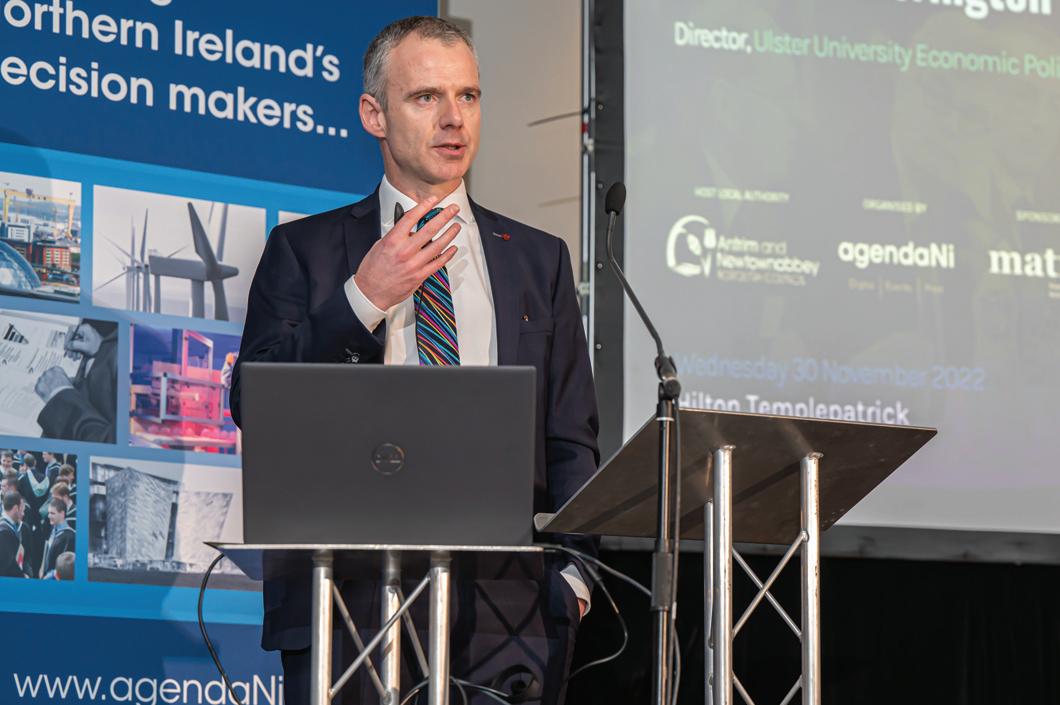


The Northern Ireland Economic Conference 2022 recently took place on Wednesday 30th November at the Hilton, Templepatrick. Over 150 delegates attended the event to hear 22 speakers, both visiting and local, from organisations including the Financial Times; Alliance Manchester Business School; Institute for Fiscal Studies; Ulster University Economic Policy Centre; Consumer Council for Northern Ireland; Women in Business NI and the Nevin Economic Research Institute.
We would like to thank our host local authority, Antrim and Newtownabbey Borough Council and our conference sponsor Matrix; exhibitors, all speakers and delegates who joined us, and made the conference a huge success.

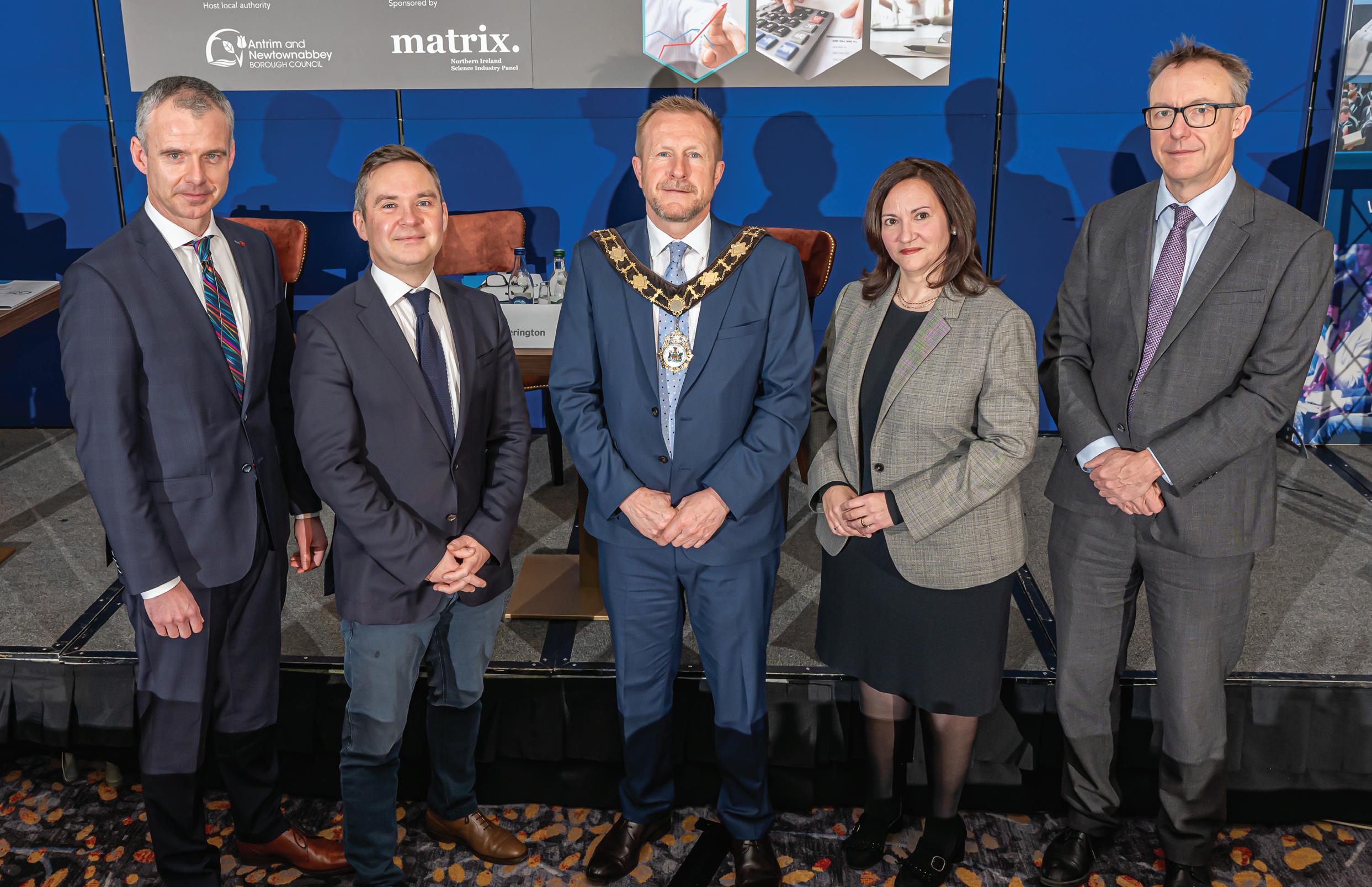 Gareth Hetherington, Ulster University Economic Policy Centre; John Campbell, BBC Northern Ireland; Stephen Ross, Antrim and Newtownabbey Borough Council; Raquel Ortega-Argilés, Alliance Manchester Business School; and Paul Johnson, Institute for Fiscal Studies and Independent Fiscal Commission Northern Ireland.
Sharon Mossman and Susan O'Kane, Antrim and Newtownabbey Borough Council.
Gareth Hetherington, Ulster University Economic Policy Centre addresses delegates.
Gareth Hetherington, Ulster University Economic Policy Centre; John Campbell, BBC Northern Ireland; Stephen Ross, Antrim and Newtownabbey Borough Council; Raquel Ortega-Argilés, Alliance Manchester Business School; and Paul Johnson, Institute for Fiscal Studies and Independent Fiscal Commission Northern Ireland.
Sharon Mossman and Susan O'Kane, Antrim and Newtownabbey Borough Council.
Gareth Hetherington, Ulster University Economic Policy Centre addresses delegates.






 Ciara Lappin, Doran Consulting; Noyana Chundur, Consumer Council for Northern Ireland; Lisa Wilson, Nevin Economic Research Institute; Jacqui Dixon, Antrim and Newtownabbey Borough Council; and John Campbell, BBC Northern Ireland.
Jacqui Dixon, Antrim and Newtownabbey Borough Council.
Clement Athanasiou and Colin Funston, Department for the Economy.
Chris Ganley, NISRA and Christopher Rothwell, Northern Ireland Assembly.
Donald Henry, Utility Regulator and Karen Costley, Northern Ireland Audit Office.
Steven Norris and Tara McCormick, Antrim and Newtownabbey Borough Council.
Ciara Lappin, Doran Consulting; Noyana Chundur, Consumer Council for Northern Ireland; Lisa Wilson, Nevin Economic Research Institute; Jacqui Dixon, Antrim and Newtownabbey Borough Council; and John Campbell, BBC Northern Ireland.
Jacqui Dixon, Antrim and Newtownabbey Borough Council.
Clement Athanasiou and Colin Funston, Department for the Economy.
Chris Ganley, NISRA and Christopher Rothwell, Northern Ireland Assembly.
Donald Henry, Utility Regulator and Karen Costley, Northern Ireland Audit Office.
Steven Norris and Tara McCormick, Antrim and Newtownabbey Borough Council.
The Peace Heroines exhibition is being ran by HerStory, in collaboration with National Museums NI, and the Irish Department of Foreign Affairs’ Reconciliation Fund. The exhibition features portraits by the artist FRIZ, as well as a series of youth workshops.
FRIZ has stated that she sought to create loud, colourful artwork, artwork that demands space, “much like the women portrayed within the canvas”.
The exhibition is currently on display at the Derry Tower Museum and a replica of the exhibition will make its way to the Irish embassy in London on 1 February 2023, followed by New York in March before being displayed at Queen’s University Belfast ahead of the 25th anniversary of the Good Friday Agreement.



On 8 February, a Peace Heroines exhibition will be on display in the United States Congress, where it will be opened by the Irish Ambassador to the United States, Geraldine Byrne Nason.
The late Pat Hume was the wife of the late former SDLP leader and Nobel Peace Prize winner John Hume, seen by many as the biggest advocate of the Good Friday Agreement. Described as his “political adviser and antenna”, Hume was a teacher who supported the family financially when her husband was in his early years in politics.
Upon her husband’s election to the European Parliament in 1979, Hume became a visible public figure as a constituency office manager, credited with helping many people who fell victim to the conflict with advice on housing, security, and education. Hume and her husband’s joint actions were critical in the journey of persuading one-time opponents to support the peace process.
Ahead of the 25th anniversary of the Good Friday Agreement, an exhibition has been making its way through the island of Ireland and beyond, paying tribute to the women who helped build the peace process.
A proud native of the Shankill Road, Eileen Weir embarked on a journey which brought her from paramilitary to peacemaker. Having joined the Ulster Defence Association at the age of 16, she later joined a trade union and became convinced that poverty and injustice did not discriminate between religion. Since then, Weir has worked tirelessly for women’s and community rights both through her trade union and later through her role as a community relations worker at the Shankill Women’s Centre, bridging religious and social divides.


A co-founder of the Northern Ireland Women’s Coalition, Bronagh Hinds served as the party’s chief strategist in the negotiations that led to the signing of the Good Friday Agreement. As a student activist, she attended the civil rights march which later became known as Bloody Sunday in 1972, before becoming Welfare Officer in the Queen’s University Students’ Union.

She stated her rationale for the foundation of the Women’s Coalition as being that she “noticed that there was going to be very few female voices around the table that was negotiating the future landscape for Northern Ireland. I think there was a recognition that more female voices could bring new perspectives and a positive dynamic”.

Susan McCrory is the centre manager of the Falls Women’s Centre in west Belfast, which she first joined in 1991. She has played an instrumental role in uniting women of all national and religious backgrounds to come together and “explore the past and build a better future”.
McCrory has stated: “We want to give women a voice at the table, to speak up in their own communities and have the confidence to stand up for what they believe in.” This is something she has done through grassroots work, including in collaboration with the Shankill Women’s Centre.
The late Sarah ‘Saidie’ Patterson was a trade unionist, women’s rights activist, and peacemaker. Pushed into adulthood by the death of her mother aged 13, she became a “trailblazing” trade unionist, and later a peace activist.

As chair of Women Together, and through her activism with the Girls Club Union, she was a devoted advocate of bringing women from the Shankill and Falls communities together for a range of activities. For this, she was honoured with five international peace awards.


A former MLA and co-founder of the Northern Ireland Women’s Coalition, Monica McWilliams was one of just two women at the negotiating table in the talks which led to the Good Friday Agreement.



In addition to her background as an advocate for the Northern Ireland Poverty Lobby, McWilliams later became a professor of women's studies and Chief Commissioner at the Human Rights Commission, where she drafted the advice on a bill of rights for Northern Ireland.
In the lead up to the all-party talks in 1996, Pearl Sagar’s name was put forward to be one of the two women at the table, representing the Northern Ireland Women’s Coalition alongside Monica McWilliams.

A social worker from east Belfast, she was seen as a “streetfighter” and someone who would “take no nonsense”. Sagar and her colleague, Monica McWilliams, stood in defiance of continuous sexism, before they and the NIWC secured important aspects core to the success of the Good Friday Agreement.
A devoted advocate of integrated education, Anne Carr spent the 1990s as a committed peace activist as coordinator of Women Together, working with women from all backgrounds and spearheading Talking and Listening Circles.

A believer in a grassroots-first approach to unity, she was one of 30 people who founded Community Dialogue to “help transform understanding and build trust amongst people who often hold opposing political, socia,l and religious views”.
The late May Blood began work at the age of 14, in her local linen mill. As a shop steward for the Transport and General Workers’ Union, she acquired advocacy skills which would later serve her in her activism with the Early Years Project, helping to found three community centres in the Shankill area. A strong believer in integrated education to break down sectarian divisions, Blood was appointed to the House of Lords by Tony Blair in 1999 and was awarded an OBE by Elizabeth II for her work in labour relations.

The service Lynch has rendered in recent months has been to trash all of the clichés imposed by tabloid hacks, darkmoney think tanks, and MPs with backgrounds in accountancy, media, junior management, or hedge funds (sectors which are very cold houses for unions). His demolition of Piers Morgan is a masterclass in trumping a series of banal questions and smart-arsery by remaining calm and focused on the issues pertinent to the strikes on the railways. Morgan’s tactics of trivial distractions and whataboutery usually work on celebs and politicians whose media-training looks shifty when confronted by his feigned outrage, but Lynch kept his head and refused to play along. The result was that this episode was probably the most replayed of the dismal TalkTV shambles.
At around the time that the RMT General Secretary Mick Lynch was becoming a household name, a Daily Telegraph headline trumpeted: “‘Beer and sandwiches’ charm offensive will avert rail strikes, says Transport Secretary.”
Let me share this. If there is one term that does not equate to ‘charm offensive’ for trade unionists, it is dismissing any negotiation or discussion as ‘beer and sandwiches’. The term is ludicrous and patronising, and dates to a sneer from the mid-1970s when Prime Minister Rishi Sunak MP was not yet born, and the Transport Secretary Mark Harper MP was still in short pants. It is one of those terms like ‘union barons’ that reveal more about the speaker than the subject. In other words, that they are not to be taken seriously at all.
It used to be the case that British politics was reflective of the more rigid class structures of that society, whereby Labour was the workers’ party and the
Tories’ dutiful servants of those who controlled land and capital. That necessitated an understanding of what trade unions actually did do, and could do, for their members. That understanding seems to have vanished among Tory MPs and their cheerleaders in the Tory press.
That is probably down to a number of developments since the heyday of the Three-Day-Week. Union membership fell dramatically with de-industrialisation as the mines were shut and engineering, shipbuilding, and manufacturing were offshored. Membership has slightly increased over the past decade, with more members coming from expanding service sectors such as health and social care, education, retail, and call centres, but the majority of those members are women, and do not fit the cliché of the ‘union baron’, and so are largely ignored in favour of the balding bloke in a suit, such as Mick Lynch.
And so, given that they have little to challenge the moral case of inflationproof pay rises, the Tories are reframing this unprecedented wave of strikes with rhetoric from the culture wars. Every poll shows support from the general public for the nurses, rail workers, teachers, civil servants, and fire fighters striking for a living wage, but a core minority back the government all the way, and those people are what the Sunak cabinet are focused upon. That is why they refuse to talk seriously with unions, hiding behind discredited pay review bodies and their pre-inflation pay offers.
Underlying this belligerence is the unavoidable realisation that Brexit is failing (not that English nationalists care one jot about the Northern Ireland Protocol). Brexit was always a culture war issue and was always incapable of resolving what really annoyed Brexiters. It was not one thing for all supporters of Brexit, but a coalition of complaint against changes in the UK (and globally) since the 1970s; ergo culture wars that never end.

The time for a grown-up conversation between Tory ministers and trade unions is overdue. They could even call it ‘negotiation’.

Dismissing trade union negotiations as ‘beer and sandwiches’ underpins the lack of challenge to the moral case of inflation-proof pay rises, writes the ICTU’s John O’Farrell.
The papers, which cover the year 1999 and the years prior, released detail the negotiations between unionists, loyalists, nationalists, republicans, and the British and Irish governments, negotiations which culminated in the Good Friday Agreement.

What has been made clear is that there was an element of unforeseen dynamism and tenacity by the late Mo Mowlam, the then-Secretary of State, as well as a cross-party approach from the British Government, with John Major and Tony Blair in frequent contact with one another. It further details the evolution of the approach of both the British and Irish governments with regard to Sinn Féin, with a key aim at the time ensuring that the Provisional IRA disbanded and decommissioned its weapons.
Mo Mowlam
As the Secretary of State for Northern Ireland from 1997, the late Mo Mowlam features prominently in the files which have been declassified.
Meetings throughout the period reveal a change in strategic outlook which took place at the heart of government in the United Kingdom regarding Ireland, including a behind-the-scenes acknowledgement of Britain’s role in the Famine in the 1840s, in addition to the role played by the British State on Bloody Sunday 1972, for which it has since officially expressed regret.

Mowlam set out her negotiating stance with Sinn Féin, outlining her belief that it ought to be accepted as a functioning democratic party with a legitimate mandate for its representatives, in the event that the party and its
representatives adhered to the Mitchell principles. She further clarified in successive documents that she would never accept the Provisional IRA as a legitimate representative, although it is widely believed that, from the British Government’s perspective, when they were negotiating with Sinn Féin, that they were negotiating with the “republican movement”.
Mowlam was also a proponent of enhancing diplomatic relations between Britain and Ireland, relations which at that point were often highly strained, although she outlined in a letter to Tony Blair that this needed to be managed delicately, with a diminishing of the British-Irish Council having the potential to strain relations between the British Government and David Trimble.
Despite this, the disbandment of the RUC was seen as a non-starter from the

At the end of December 2022, the Public Record Office of Northern Ireland (PRONI) declassified a series of papers, detailing what was taking place behind the scenes in political life in Northern Ireland through the mid-1990s.
British perspective, with Mowlam outlining in correspondence regarding upcoming negotiations with Sinn Féin that the British Government would not support such a measure, although it later became a cornerstone of the subsequent agreement.


The late David Trimble, the former leader of the Ulster Unionist Party, was a key figure in ensuring that unionism came to support the Good Friday Agreement. Papers detail how he held “businesslike” negotiations with former Sinn Féin president Gerry Adams, with concerns at the potential “embarrassment” at how such collaboration with republicans would be perceived by people within his own party, as well as the wider unionist electorate.
Documents further reveal a level of mutual respect between the Ulster Democratic Party (UDP), the PUP, and Sinn Féin, all of which acknowledged each other’s aspirations and praised their respective roles in persisting with the talks. However, the documents reveal that, at one point during the negotiations, Sinn Féin accused the British Government of collusion when the Ulster Freedom Fighters (UFF) murdered two Catholic men, in order not to compromise the position of the UDP, a key loyalist stakeholder in the negotiations.
William McCrea, who now sits in the House of Lords as a DUP representative, further alluded to a “conspiracy” surrounding the circumstances of Loyalist Volunteer Force (LVF) leader Billy Wright, who was murdered in prison in December 1997.
Documents further reveal an assertion made by Gregory Campbell, who now sits as a DUP MP. He outlined concerns in negotiations in 1997: “I want democracy. At present we are disenfranchised. Why? Because hoods and gangsters who turned up at Downing Street manipulate thousands of votes in order to get elected, as in Mid Ulster.”
Campbell further outlined his objections to the approach to be taken with regards
to the Irish language. “If a supporter of the Irish language applies for a grant, the only matter in question is the number of noughts on the cheque. That figure could be £10,000 or £100,000. I want that to be changed. Unionists have an ethos and culture which must be respected.”
A paper released by the Irish Government in May 1997 details the approach taken by its representatives when dealing with Sinn Féin. Whilst there was no blanket ban on association with Sinn Féin, a party which just eight days after this letter won its first Dáil Éireann seat since 1957 with the election of Caoimhghín Ó Caoláin, there was a ban on ministers going to an event with the expressed purpose of meeting Sinn Féin
representatives, and ministers were ordered not to go out of their way to meet Sinn Féin representatives, as well as being required to have expressed permission should they have to meet a Sinn Féin member.
The papers offer a unique insight into the unique role played by Mo Mowlam in the negotiations, with her dynamic capability being highlighted in how she navigated the treacherous path of ensuring that republicans, loyalists, as well as mainstream unionists and nationalists, could be brought into a process, in addition to spearheading a thaw in relations between Britain and Ireland; measures which have helped Northern Ireland maintain a level of relative peace.

I first became involved with the DUP during my time at Queen’s University Belfast. As someone who believes that Northern Ireland and all of its people are best served within the United Kingdom, I was keen to play my part in keeping Northern Ireland moving forward.
At the age of 22 I was given the amazing opportunity to enter local government and served my hometown of Glengormley on Antrim and Newtownabbey Borough Council for 10 years, leading the DUP group on the Council.
Outside of elected politics, I worked for the Democratic Unionist Party in both Belfast and London and served as a nonexecutive director of the Northern Ireland Housing Executive and the Public Health Agency.

I am so proud to come from north Belfast and I wanted to give something back to the community that had supported me and given me so many opportunities growing up.
The DUP’s Phillip Brett was elected for North Belfast in May 2022, having previously served as a councillor and party group leader for the Glengormley area of Antrim and Newtownabbey Borough Council for a decade.

I am a firm believer that young people have a vital role to play in political life and it was that sense of duty and desire to serve all the people of north Belfast to the best of ability that inspired me to get involved in politics.
I do not come from a political family, but my late father Michael Brett, dedicated his entire life to serving the people of north Belfast. As a paramedic for over 30
years and based in Ardoyne, he worked in north Belfast during some of its darkest days, serving all sections of our community without fear or favour. Following the murder of my older brother, my dad dedicated himself to campaigning against sectarianism and violence, his legacy continues to inspire me to ensure north Belfast continues to work forward.

I truly believe that the interests of all of our people are best served as part of a strong and prosperous United Kingdom. I was drawn to the DUP under the leadership of Peter Robinson and his vision for unionism, which sought to reach far beyond the traditional divide.
I am passionate about ensuring unionism and the DUP can attract support from all sections of society and believe I can play an important role in achieving that.
As a passionate campaigner for tackling educational underachievement and supporting working-class communities, the DUP’s dedication to this vital cause was a major attraction for me.
North Belfast has an acute shortage of affordable and social housing, which is leading to the breakdown of communities, with families being forced to move outside the area to find suitable housing. We are making progress, but I am determined to ensure no one is forced to leave north Belfast to find suitable housing. We are blessed with wonderful schools in north Belfast and I am passionate about supporting them to ensure educational excellence for all of our young people. Education is the single greatest tool for empowering our communities and I want to see all children in north Belfast given the opportunity to reach their full potential.
As north Belfast continues to move forward, it is vital that all communities feel the benefit. Only by achieving inclusive growth for all parts of north Belfast, can we ensure no community is left behind.
Outside of politics I am big football fan. I enjoy nothing more than following the Northern Ireland football team across Europe and further afield.



In the past 15 years, we have lived through recession, austerity, Brexit, and a global pandemic. For four of the last six years, we have been without a functioning Executive. One strategy that did make it through in the last mandate was the Mental Health Strategy. With cross-party support and a costed implementation plan, hopes were high and still are. But the strategy is only one part of the equation if we want to see people and communities thrive.

If we do not tackle the root causes of poor mental health and reduce socioeconomic inequalities, we will continue to see mental health problems increasing and people and communities experiencing distress.
So, the next crisis is upon us, the cost-ofliving crisis. But for many, it is not new. Before the term was coined, many people could not heat their homes or feed their families. We are not all in this together
because how we experience this ‘crisis’ as individuals and communities differ depending on our circumstances.

Polling* we conducted in November 2022 with LucidTalk revealed that 44 per cent of people felt anxious while almost one in 10 (9 per cent) felt hopeless about their financial situation. This has contributed to people showing signs of behavioural changes that are detrimental to mental health, including having poorer quality sleep, exercising less, and seeing friends and family less often.
We know that poverty and financial strain are linked to poor mental health and an increased likelihood of experiencing mental health problems. We know that mental health problems can be prevented if we tackle the root causes of poor mental health, including poverty, inequality, poor quality and insecure housing.
When we published our paper, Mental Health and the cost-of-living: Another pandemic in the making?, we made recommendations for actions governments can take to try to prevent this crisis from having a further detrimental impact on public mental health. Fundamentally, financial support schemes must prevent people from experiencing poverty and financial strain. But we also need to see government assess the mental health impact of the decisions they make and provide sustainable funding to the community organisations that provide support. For those working with people who are experiencing financial strain, we need them to understand the mental health impact and provide a compassionate response.
We have an ethical imperative to do all we can to stop people from experiencing mental distress, and there is an economic case too. Our research with the London School of Economics and Political Science found that, before the Covid-19 pandemic, mental health problems cost the economy in Northern Ireland £3.4 billion per year. If the cost-of-living crisis causes more people to develop poor mental health, this economic cost will increase.
As we have seen during previous crises and world events, ignoring the impact on mental health damages people and communities and can impact future generations. We must act now.

When we say this is a public mental health emergency, we are not exaggerating, writes Karen Hall, Head of Northern Ireland at Mental Health Foundation.







































